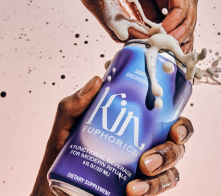Whether you’re an email marketing pro or just getting started, there are ways you can improve your strategy. (Trust us, your subscribers and ROI will thank you.)
We’ll cover what you need to know to create a winning email marketing strategy:
- Why creating an email strategy is important
- 16 best practices for an effective email marketing strategy
- How to collect email addresses
- Picking an email service provider
Before we dive into what you need to do to create and/or improve your email strategy, let’s first cover why it’s important to have one.
Why you need an email strategy

Creating a solid email marketing strategy isn’t just good practice. It’s also an important part of boosting your conversions and revenue. Just look at these statistics:
- Conversion rates for emails are higher than social media, direct traffic, and search.
- Email offers result in shoppers spending 138 percent on their purchases.
- For every $1 spent, email marketing generates $32 in ROI.
- More than half of marketers say email is their No. 1 source of ROI.
And the importance of email is only going to continue to go up as the number of emails sent do the same. By the end of 2023, there are expected to be nearly 350 billion emails sent a day. For some context, that’s 60 billion more than go out each day now.
Email is the most cost-effective way to promote your products, communicate with your customers, and reach your company’s goals. So the question isn’t if you should put together a solid email strategy — it’s how you can create the most effective one to attract and convert more leads.
16 elements of an effective email marketing strategy
We’ll share all of the insider tips, tricks, and techniques you need to know about creating the best email marketing strategy.
1. Define your audience.

Who is your ideal consumer? If you want to engage that person with your email campaigns, you need to know who they are first. And the answer is right in front of you. Your target audience is who your company serves.
For example, if you sell dog food, your target audience would be pet owners. If you sell children’s clothes, your audience would be moms, like in this Carter's email:
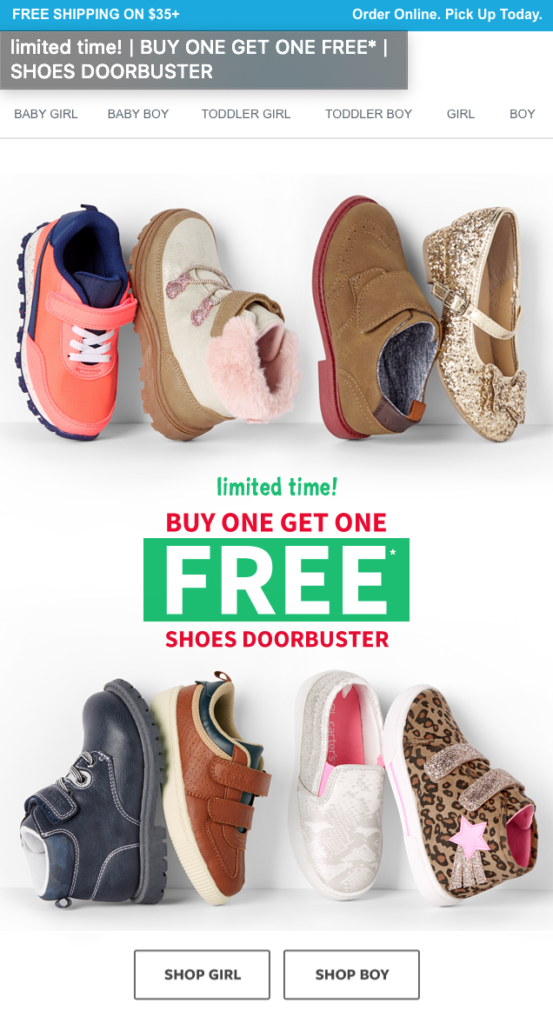
You get the idea. Make sure all of your email marketing campaigns are tailored to your brand’s specific audience.
2. Craft engaging subject lines.
Your email’s subject lines should tell subscribers what the email is about and why they should open it. Here are a few things to consider when crafting your subject lines:
- Length
- Wording
- Personalization
Here are a few examples of the type of subject lines brands are sending;

We’ll cover more on personalization in the next point, so let’s focus on the length and wording of your subject line. For the length, you want to avoid ones that are 60 to 70 characters long. This is often referred to as the dead zone of subject length.
Subject lines that are 70 characters and longer tested to be the most beneficial to engage readers in clicking through to the content, while ones that have less than 49 characters tested well with open rates. And ones with fewer than 10 characters have more than a 50-percent open rate.
https://www.youtube.com/watch?v=5py5PLLB-3o
3. Personalize the emails.
A great way to catch a subscriber’s attention and let them know the message was designed just for them (even when it’s simply automated) is by using personalization techniques. Here are a few easy ways you can do that:
- Use their name. By adding [FIRSTNAME] — or whatever the formatting is for your ESP — to the subject line and/or email copy, it makes the email seem more personal.
- Give recommendations. “You viewed this, so you might like these other options.” That kind of approach followed by some products related to their recent searches or purchases shows them you care about what they like. This email from Lyst pulls recommendations based off of the brand they viewed.
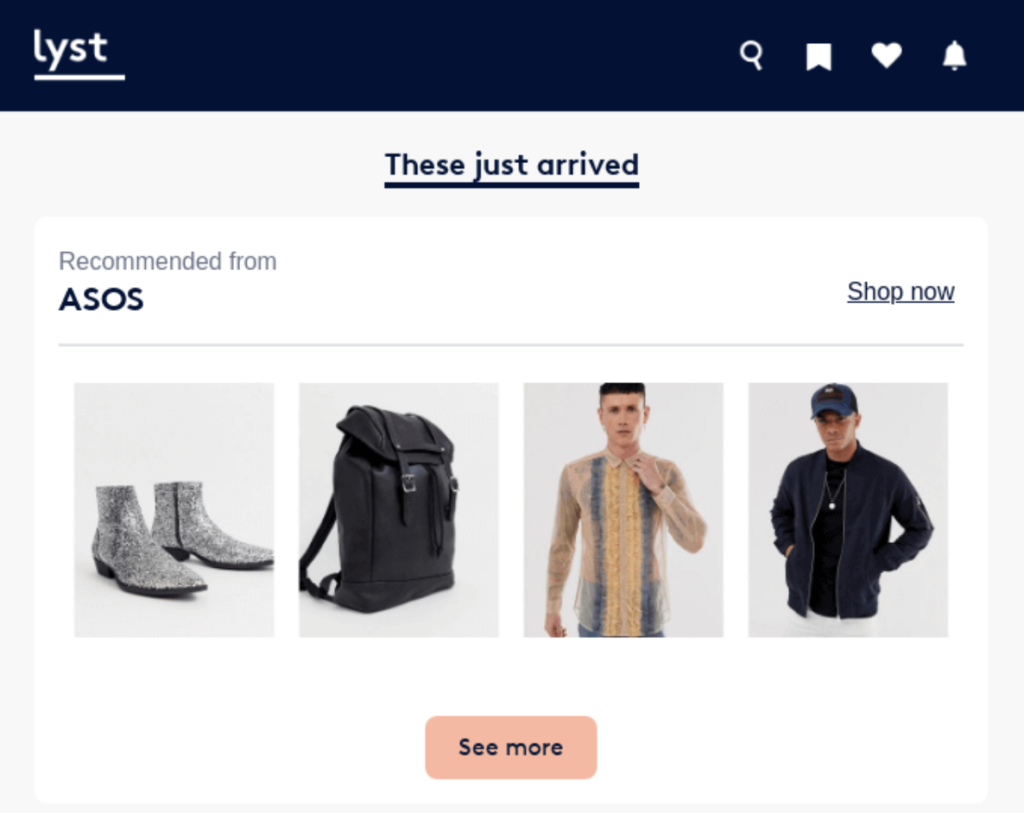
But don't just personalize the email to the subscriber. Remember, this is a two-way relationship you’re trying to create with the consumer. So, you should also add your brand’s personal information:
- Include a real reply-to address. Don’t use those donotreply@company.com. That gives the email an automated, un-personalized feel. Plus, that limits their ability to engage with your brand if they want to ask you something.
- Use a real email signature. Include your name and contact information (or the information for the person who’s responsible for customer service) at the bottom of the email. You want your emails to seem as genuine and approachable as possible. They should feel like messages between two friends.
Make it even easier for your subscribers to reach out to you by including a CTA at the bottom.
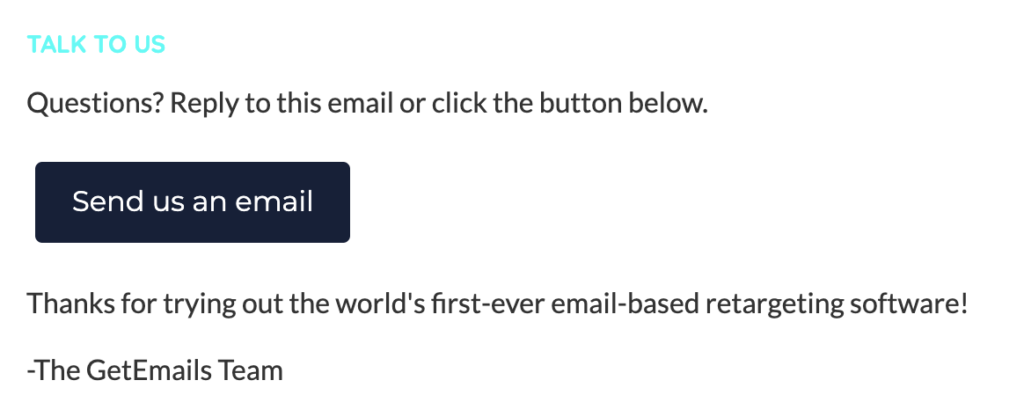
4. Segment your subscribers.
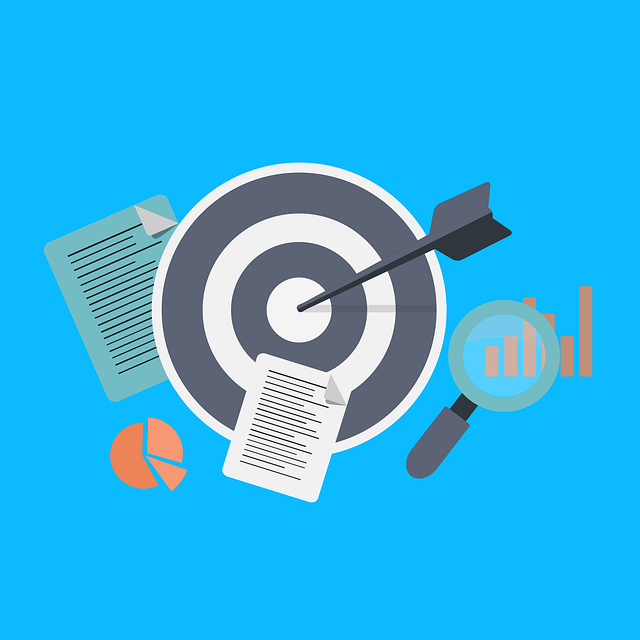
One of the best ways you can create personalized campaigns is by segmenting your subscribers. When you segment your audience, you’re able to take a much more targeted approach with your email campaigns. That helps you deliver applicable, valuable, and useful content to the right people.
After subscribers fill in your form, this data will be added as a variable to your mailing list. Then, you can choose either a specific variable or a mailing list segment to send your email campaign to. As a result, every subscriber will receive the offers they’re interested in.
How to segment
These are a few factors you can use to segment your audience:
- Location
- Age
- Gender
- Job title
- Industry
- Purchase history
- Pageviews
- Interest level
- CTA clicks
- Company size
These are some good starting criteria to use when segmenting your lists, but figure out which factors work best for your brand. You can use the information you’ve collected from them online, along with surveys and other data. The more you’re able to hone into what your subscribers want, the happier you will all be.
How do we know that? Because segmented lists result in higher open rates, revenue, sales leads, transactions, and deliverability.
For example, Target sent this email to subscribers with children:
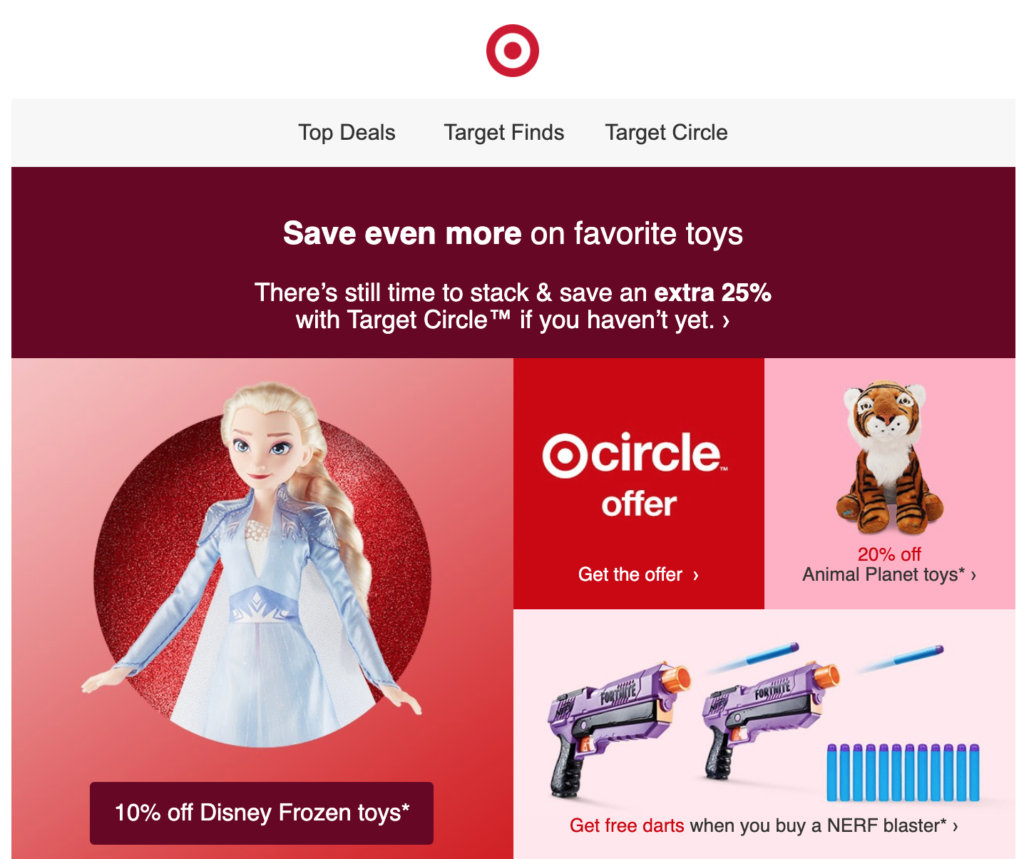
5. Use email automation when possible.
Automation and marketing go hand in hand. So, we suggest you set up automated processes anytime it’s possible. And not only is it possible when it comes to your email strategy, but it’s also highly necessary.
Automated, or trigger-based, emails are ones that you send automatically based on user behavior. You can set up these Journeys, as they are called, based on several types of events, like in this example from Robly:
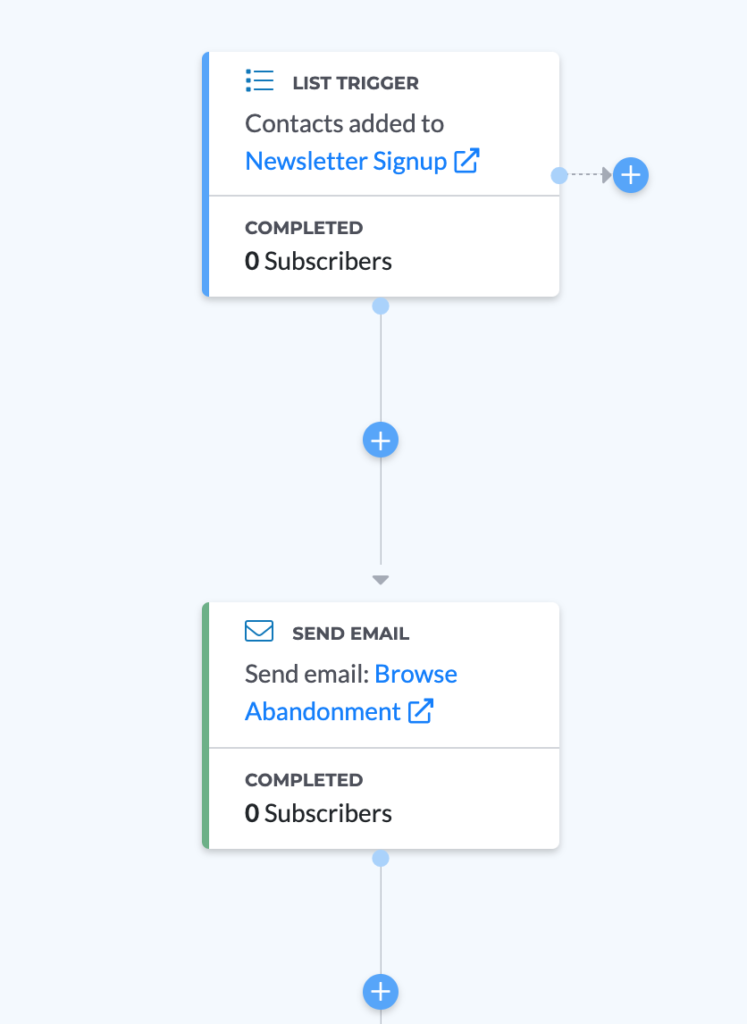
Popular trigger emails
- Welcome: Confirm they signed up, send a double opt-in, or let them know what type of emails they can look forward to from your brand.
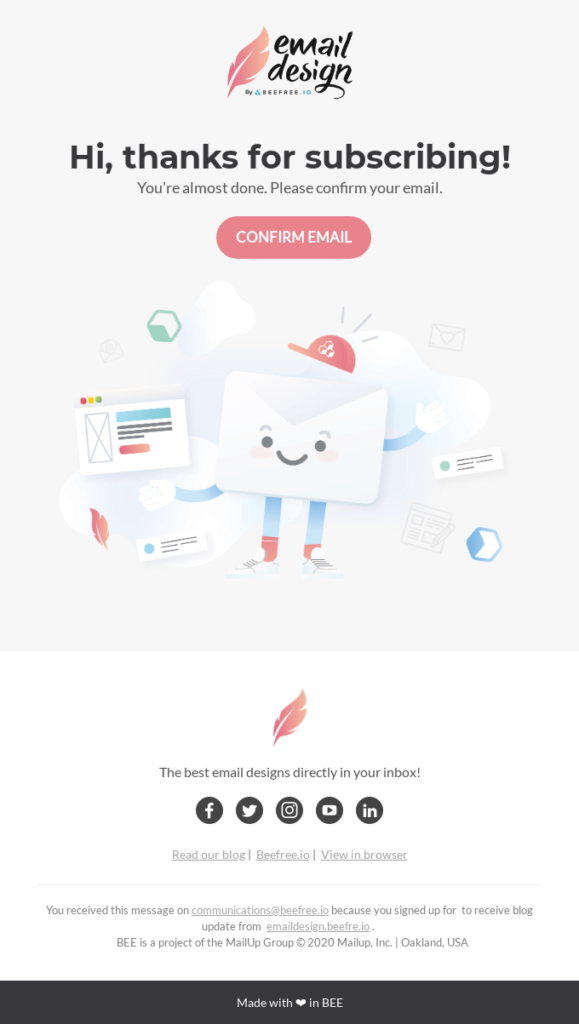
- Thank you: Thank them for taking an action, like entering an online giveaway.
- Transactional: This could be a confirmation email or email receipt.
- Cart abandonment: Remind them they left something in their cart so they will go back and complete the purchase with a cart abandonment email.
- Browse abandonment: Unlike with cart abandonment, these shoppers never add anything to their cart. They simply look and leave — similar to window shoppers at physical stores.
- Milestone: These emails help you build long-lasting relationships with your customers. It could be a customer’s birthday or anniversary with your company. This type of campaign is known for great open and click-through rates because of their personalized nature.
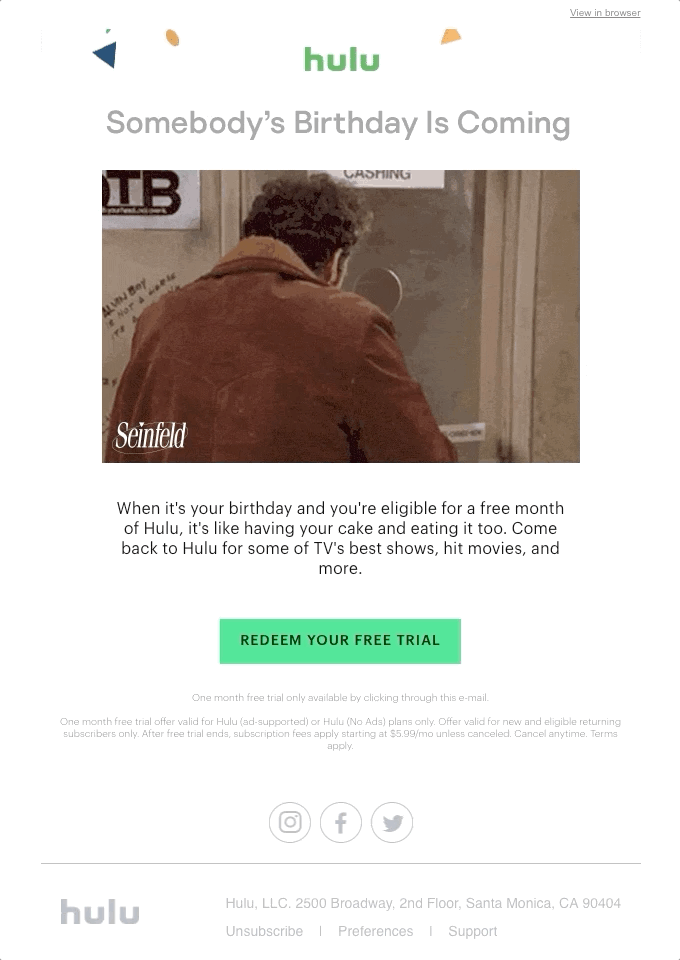
Here’s more on setting up and sending a welcome email series:
https://www.youtube.com/watch?v=tEmNI-RbCKo
Data shows that these automated emails perform better than traditional emails. They have:
- Much higher open rates
- An average click-through rate that is more than double the rate
Plus, sites with the best conversion rates use these trigger emails, and these emails can generate a higher ROI.
What makes this strategy so effective is that the emails hit their inboxes at the perfect time — right after they’ve completed some sort of action. So, you know these messages will be timely and provide relevant, personalized information to the subscriber.
6. Create a design hierarchy.
Your email needs to be straightforward, so no hiding the main point. Start with a headline or leading image — or combine them and put the text on the image, if it’s easy to read. Then, you can move into the body of your email, which will be in a smaller font. Think of the design as an inverted pyramid with the meat of the message at the top.
You can see a hierarchy in this email from McAllisters:


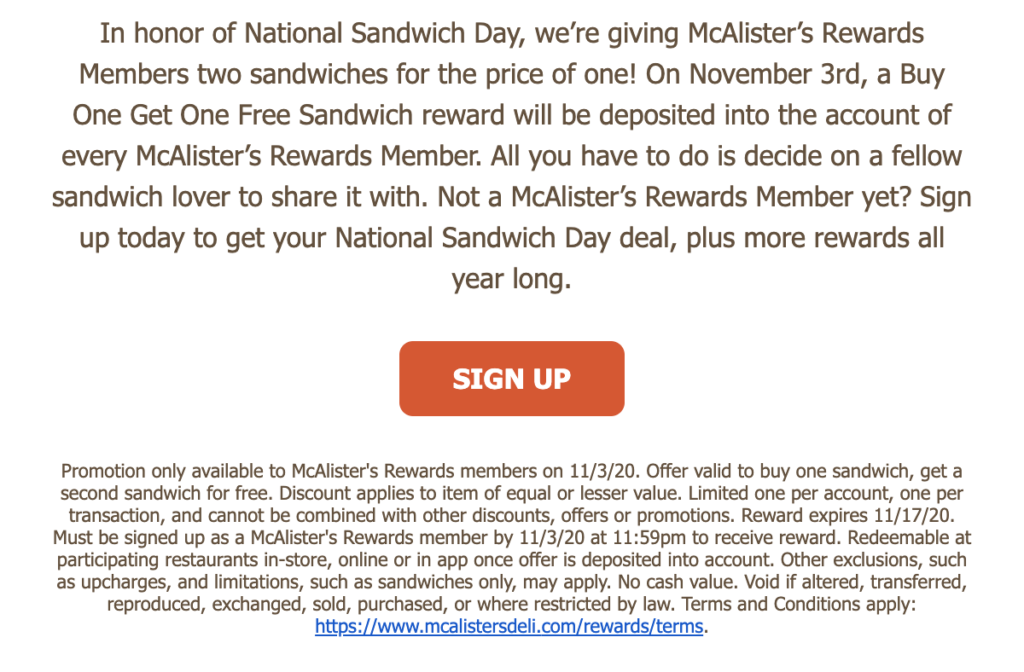
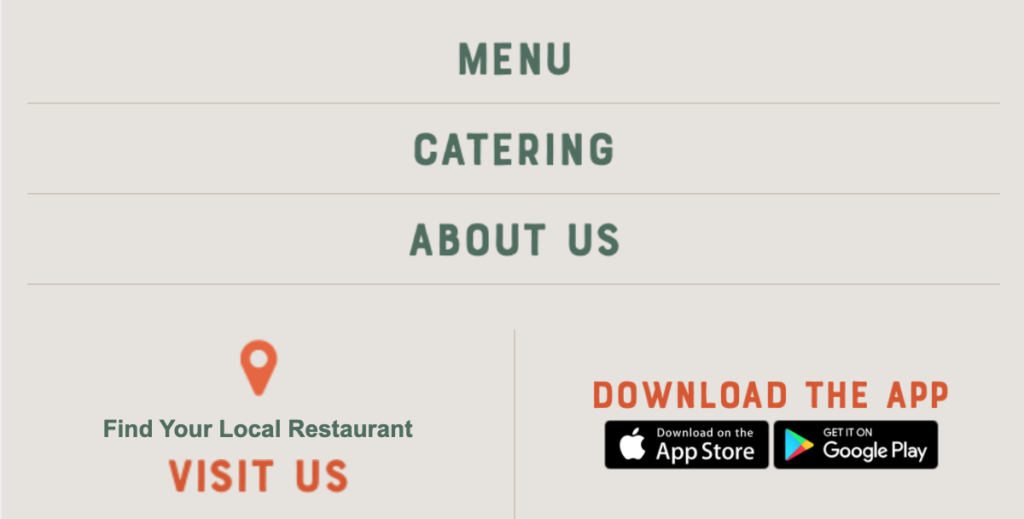
7. Conduct A/B testing.
Also known as split testing, A/B testing allows you to try out different versions of a campaign to see which one performs the best. For example, send subscribers the same email but with two different subject lines. That will show you which subject line worked best, and you can use that information to create future subject lines.
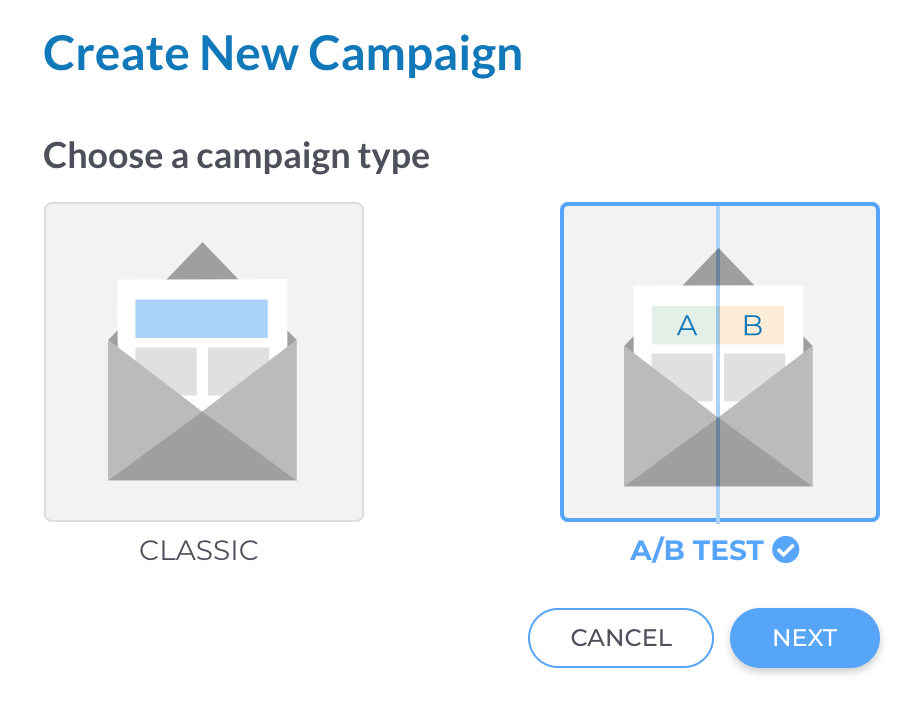
Other ways to use A/B testing
- Plain text vs. HTML campaigns: You’re probably already sending a plain text version of your email. But, have you considered testing an email campaign that is plain text only? That approach can look like it was written just for that subscriber, especially if you throw in a personalized element.
- “From” address: This is the name that appears in the “From” field of the email, and it has a huge impact on whether or not the subscriber opens your email. The sender name is often the main reason why people do or don’t open an email. Test your “From” address by sending your campaigns from a person’s name, person + company, or from your company’s CEO.
- Short vs. long emails: Try a short and sweet approach, and then create another version that’s longer with more details. Shorter emails can link to a targeted landing page if they want more information. Whereas long-form emails can include more of that information directly in the copy. See which one your subscribers prefer, and use more of that format going forward.
Here's an example of one that's short and sweet from Postmates:
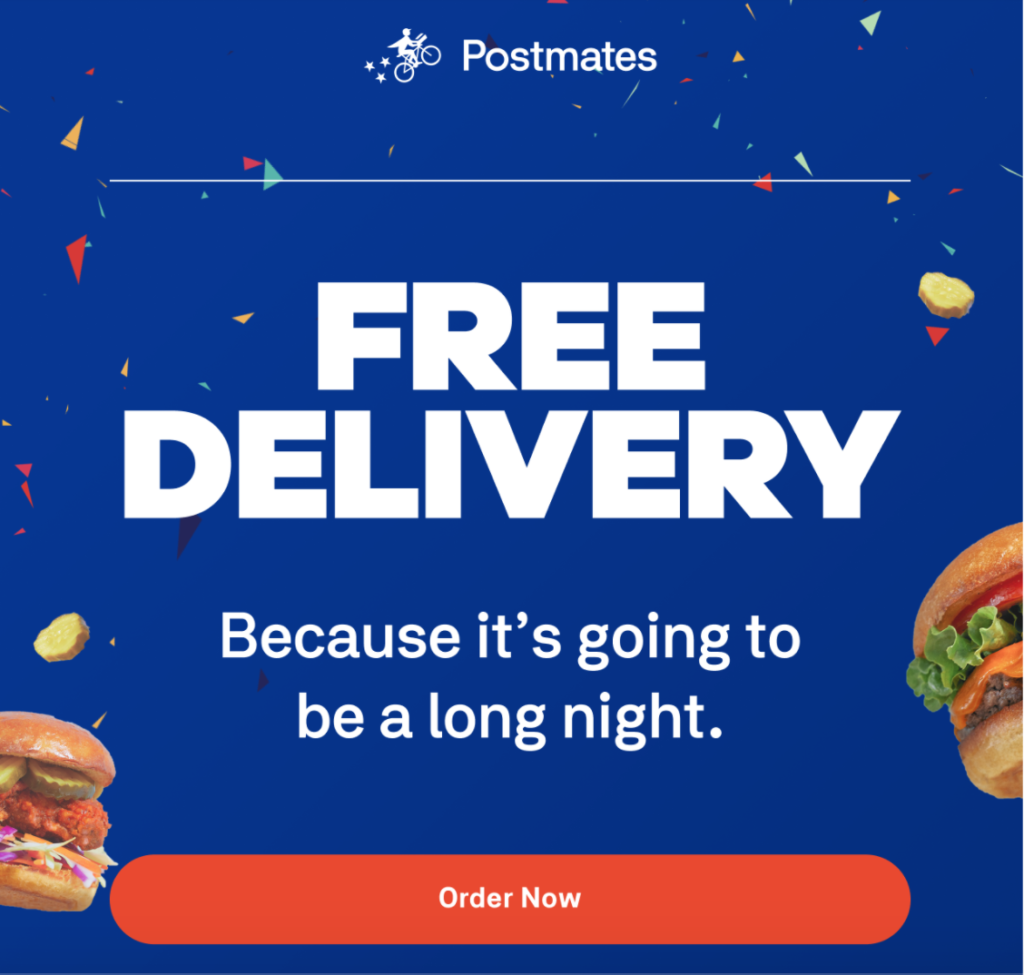
It’s important to keep everything else the same about the campaign, except for the component you’re testing (ex. subject line). If you alter more than one thing, you won’t know which element helped or hurt your metrics.
8. Use one CTA.
This isn’t a hard-and-fast rule, so there can be exceptions. However, for the most part, you’ll want to have just one CTA in your email campaign. You can repeat the CTA a few times throughout the email (we all have short attention spans).
Overstock does repeat this "Shop Now" CTA in this email example:
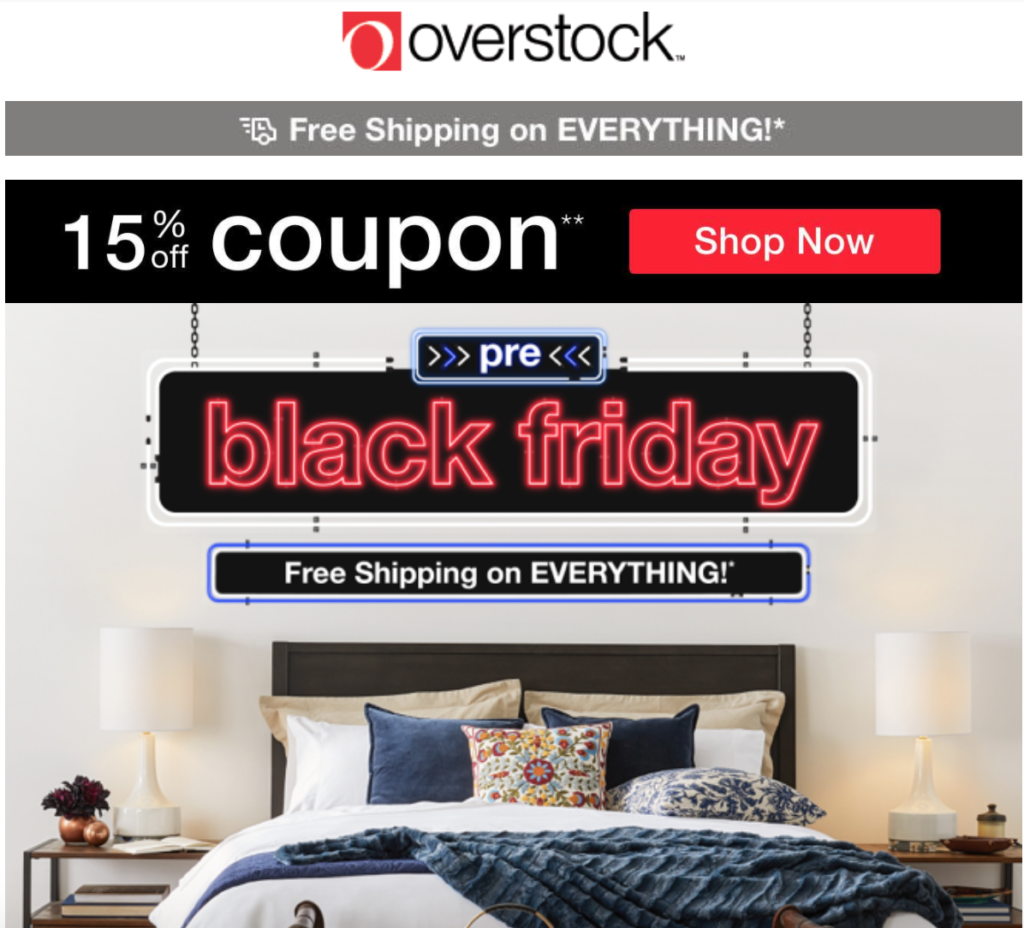
But, when you have different CTAs asking for different things, it becomes difficult to convert prospects. You won’t be helping subscribers buy your product when you use multiple CTAs. Most likely, they will be confused about which action to take — and that’s not good for your ROI.
9. Give them something.
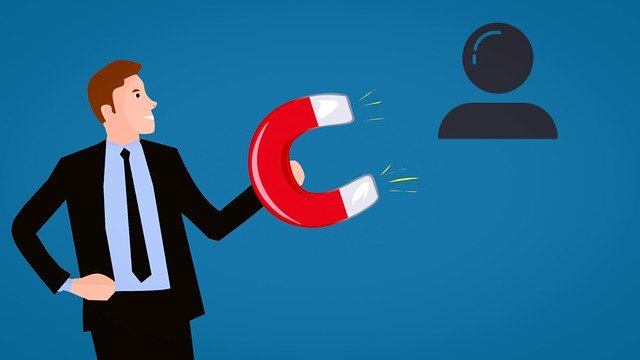
Everyone likes getting something, especially if that something is free. So, send your subscribers a link to a lead magnet (ex. downloadable PDF with premium content), a free trial or subscription to your services, or a link to a video that’s only for subscribers.
You want your email campaigns to seem like a special feature only a few can enjoy, so don’t forget to reward your subscribers. You can also use exclusivity to build a deeper connection with your email subscribers.
10. Stay out of their spam folder.

You want your email marketing campaigns to engage your audience. But, it can only do that if it lands in their inbox to begin with. That means you need to make sure your email avoids spam filters.
We have a whole blog on that topic alone (linked to above), but here are some of the main ways you can keep your message from being labeled as spam:
- Stay compliant with the CAN-SPAM Act
- Use a double opt-in approach
- Regularly clean your lists
- Don’t send attachments or media
- Follow email marketing best practices
- Avoid spammy words
That’s just a short list, but you’ll want to make sure you check your emails for anything that could flag them as spam.
11. Track your email metrics.
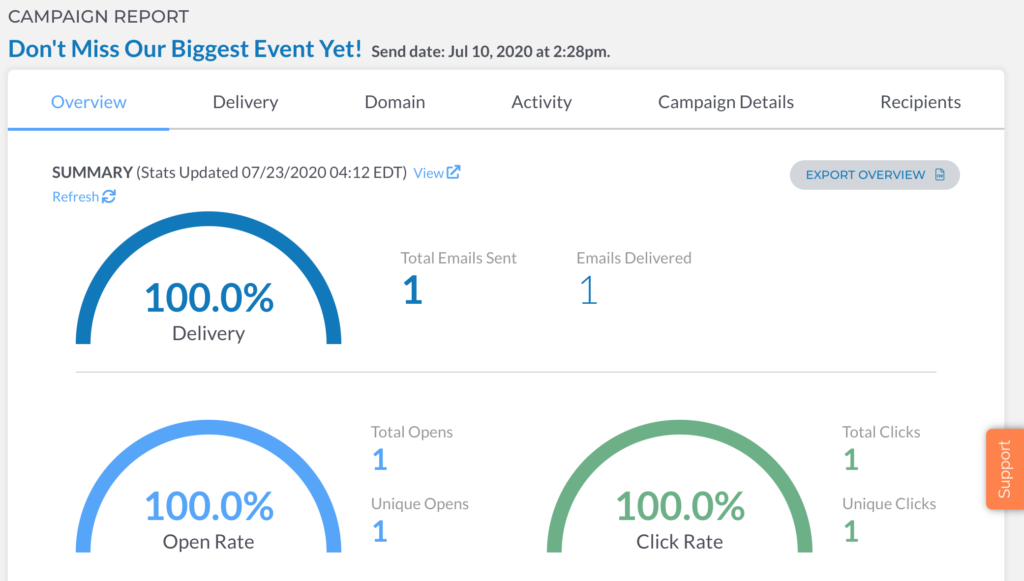
The only way you will know if your email strategy is succeeding or failing is if you monitor your email metrics. The exact metrics you look at will depend on your specific goals. For example, are you trying to increase click-throughs to a lead magnet, or are you wanting to boost your open rate?
No matter your goal, here are a few of the rates you’ll want to monitor:
- Open rate: The number of emails opened compared to the total amount delivered
- Click-through rate: The number of clicks on the link contained in the email message
- Bounce rate: The number of emails that returned an error after being sent (hard or soft)
- Unsubscribe rate: The number of people who unsubscribed to your emails
- Return on investment: The total sales value resulting from an email campaign minus the cost to create it, divided by the same cost — multiply that number by 100 to get your ROI
Again, these metrics are a good place to start. But, there are plenty of other numbers to look at, depending on what your brand is trying to achieve with your email marketing strategy.
https://www.youtube.com/watch?v=q5Q5HM87-_s&t=1s
12. Make sure your emails are optimized for mobile.

You might design your email campaigns on a computer, but you better make sure that’s not the only place they can be properly viewed.
More than half of all consumers are viewing their email on mobile devices, so your campaigns better be showing up correctly on these smartphones and tablets. Because if they aren’t, your emails will probably end up in their Spam or Trash.
Here's a mobile view of PatPat's email:
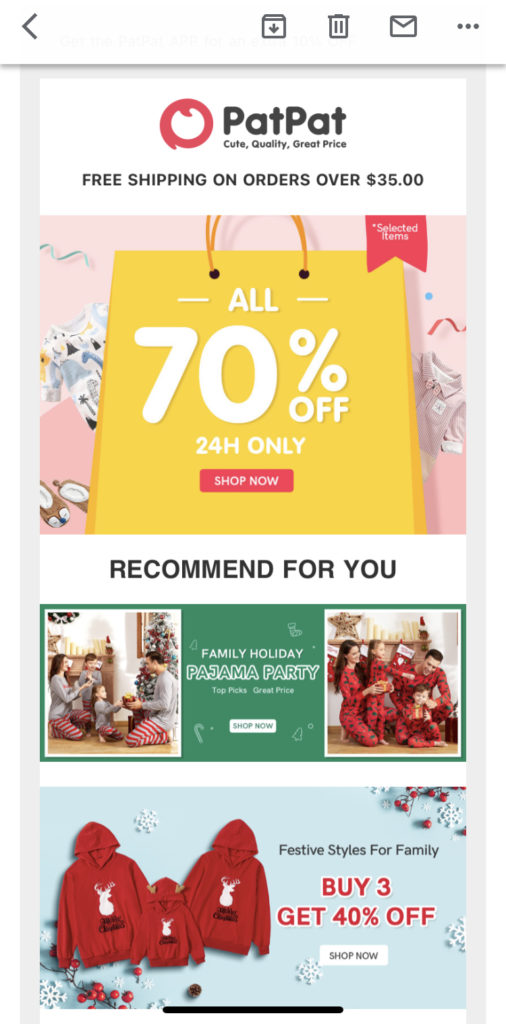
Optimization tips
How can you do that? Here are a few methods to making sure your email is optimized for mobile devices:
- Keep the subject line short. Smaller devices mean a smaller space to read your text. Someone who views a subject line on a mobile device is going to see fewer characters compared to someone on a desktop. So, make sure they can still understand what your email is about in the 30 to 40 characters they can view.
- Use a responsive email design. This design ensures the subscriber sees your email correctly, regardless of the device or screen size they use. Most ESPs offer this solution within their email functionality.
- Go with an easy-to-spot CTA. You have limited real estate on a mobile device, so be straightforward with the CTA. It needs to be large enough that they don’t have any issue clicking it with their fingers.
13. Pick the best time(s) to send your emails.
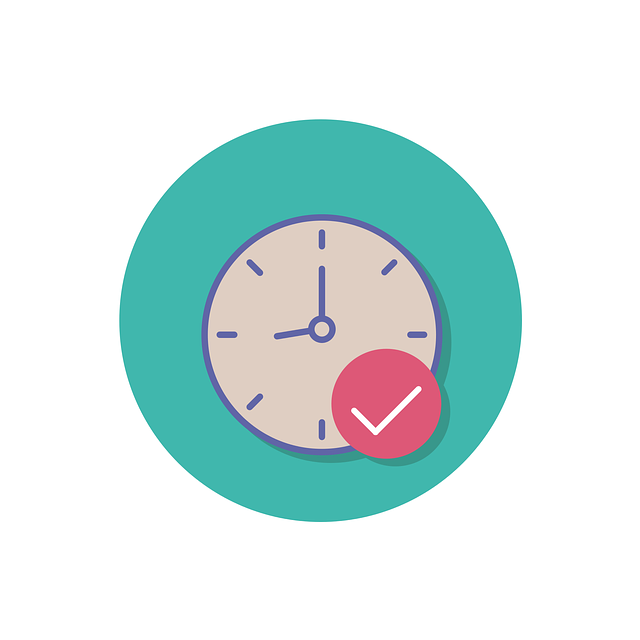
Sometimes, finding the right time to send your email campaigns is the difference between getting the open and heading to the Trash folder. You’ll need to look at your subscribers’ open times to see when is the best send time for your brand, but here are some of the best times to send across the board:
- Time: Between 10 and 11 a.m. (local time)
- Day (best opens): Thursday
- Day (best click-through): Tuesday
Those can serve as a good starting point, but just remember there isn’t a one-size-fits-all for this type of stuff. So, you’ll still need to rely on your metrics and data to find the best day and time to send your email campaigns. If your subscribers are in different time zones, you’ll want to make sure the emails hit their inbox at the right time for them.
14. Encourage social sharing.
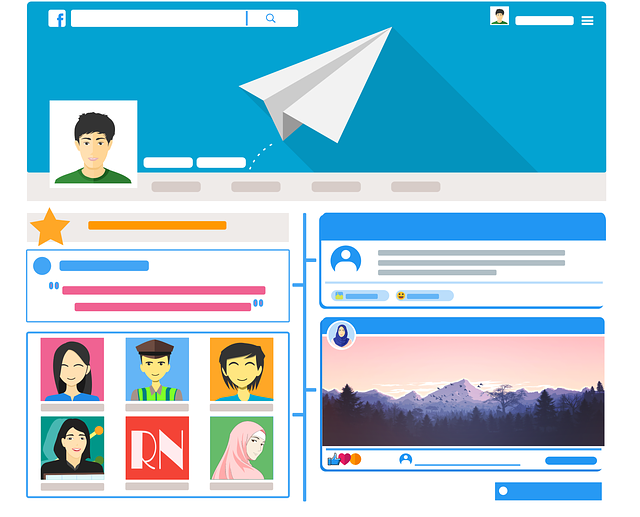
To improve your campaigns, you can integrate your social media and email marketing strategy. You can do that by:
- Posting something to your followers about signing up for your newsletter/emails.
- Running a social media ad with a signup form.
You can also include your social icons in the footer of your email to show subscribers your social channels, helping to continue their engagement with your brand. Wayfair even gives subscribers a hashtag to use:

Be sure to design your email so subscribers are able to share a version of the message on their social channels. That will help you gain exposure and increase engagement with your contacts.
15. Test and edit everything!
One of the biggest mistakes marketers make each and every day is also one of the easiest to avoid: They don’t test their email campaigns before sending them. That means:
- Read your email, subject line, and “From” text.
- Use an editing tool like Grammarly (if your editing skills are lacking)
- Send yourself and a friend or coworker a test email.
Once everything is designed to your liking, you should send yourself (and a coworker, if possible) a test email. Depending on your ESP, you’ll be able to choose to send a test message from inside of the design tool and/or from your campaign builder page.
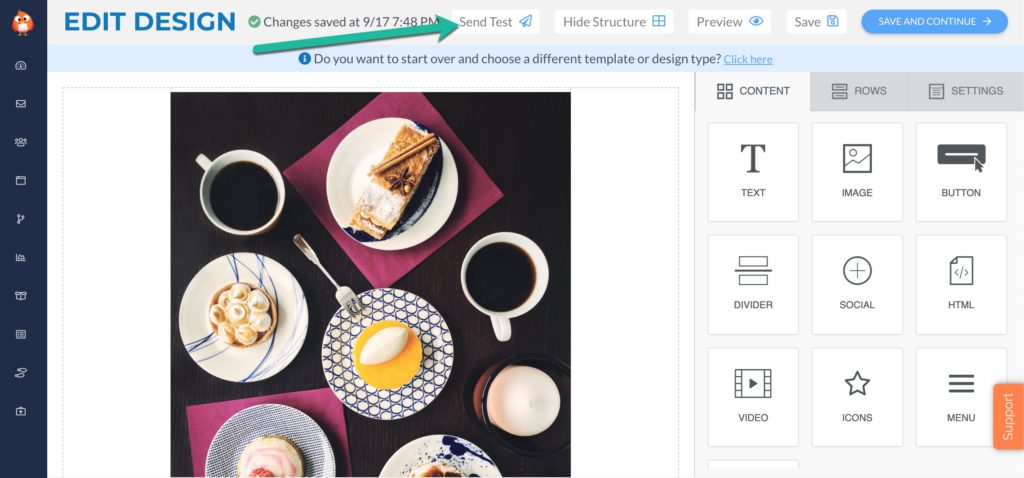
That’s how you can make sure everything works, from the CTA and other links to images. This is your chance to make sure nothing’s broken or going to send them to the wrong place. Not only is it inconvenient for the subscriber, but it also makes your brand look unprofessional. And that can cause them to mark your message as spam.
16. Be consistent with your sends.
Like with send times, there’s no hard rule on how often you should email campaigns. However, it has been proven it’s better to send emails more often than less often. You want to stay relevant to your subscribers, and it’s hard to do that if they only receive messages from you once in a blue moon.
The best approach is a consistent one. If you decide to email them once a week, for example, make sure you stick to that schedule. You can even send at the same day and time so they learn to expect your message then.
To ensure you’re sending the number of emails each subscriber wants, let them choose how many messages they receive. You can include these checkboxes with your subscription form or even in a double opt-in message. Put the power in their hands.
How to collect email addresses
You want to create an email strategy that engages your audience. And if you follow all of the techniques we’ve listed above, you’ll be on the right path. But, what if you don’t have much of an audience yet? Don’t worry: We’ll help you with that too!
There are a few different ways to collect email addresses, and here are some of the most popular methods:
- Sign-up form on your website. If visitors are interested in your brand, they’ll want to subscribe to your emails so they don’t miss anything.
- Ecommerce site. When someone makes a purchase, follow up with a transaction email and then continue to engage with them from there.
- Lead magnets. Have an ebook, whitepaper, or other content that your audience would find valuable? Post about it on social media, and include buttons or pop-ups to it on your homepage. When people sign up to download the materials, they’ll be added to your email list.
- Physical sign-up sheet. If your brand is more focused on a brick-and-mortar store, be sure to have a sign-up sheet people can add their email addresses to. These can also be useful for events.
- Social media links. Post a link to your newsletter signup on your social media pages. People who follow your pages are already engaging with your brand, so help them take the next step. You can even run a contest that’s only for email subscribers, encouraging them to sign up.
- Use Retention.com. At Retention.com, we identify up to 35 percent of your website’s anonymous traffic via a code snippet that’s placed on your website. We do that through either cookies or a contact database. And yes, you can send marketing emails without opt-ins.
https://www.youtube.com/watch?v=0L9MtliuHbM
Once you start building your email list, be sure to keep it clean. That means you should remove addresses that have a hard bounce, don’t open your emails after several months, or lack other engagement metrics.
A good email strategy puts quality over quantity, so don’t be afraid to remove a subscriber if they aren’t interested in your brand. You can run a re-engagement campaign to try and win them back, but if that doesn’t work, it’s time to let them go.
Pick an email service provider (ESP)
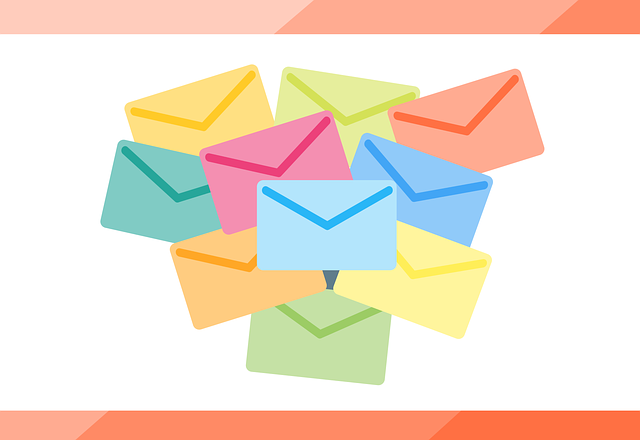
An important component in having an effective email strategy is picking the right ESP. The ESP is your partner when it comes to sending email marketing campaigns, and they can also take some of the guesswork out of the equation.
So, how do you go about picking the right one for your company? There are several to choose from — both with free and paid options — but we’ve put together a list of some of the top ones:
- Mailchimp is one of the leading email service providers and is known for its easy-to-use interface — perfect for beginners wanting to send newsletters and automated messages with little to no learning curve.
- Autopilot allows you to personalize the customer’s experience by sending emails, in-app messages, SMS, and postcards to deliver your marketing.
- Constant Contact gives you the tools you need to manage your email marketing, social media ads, website, and e-commerce store.
- Robly is known for its OpenGen technology, which resends your email campaign within 10 days after the initial send (with a different subject line) to your subscribers who didn’t open it the first time.
- AWeber is pretty intuitive and it integrates well with platforms like WordPress, Facebook and PayPal.
- Drip has a lead-scoring algorithm that tracks a variety of events to show which of your subscribers are the most engaged.
These are just a few of the ESP options out there, so do your homework to figure out which one is best for your brand. Each option has pros and cons, along with a range of package prices, so it’s just about finding the right fit.
Put your email strategy to work!

Once you implement a solid email strategy, you can start enjoying the fruits of your labor — i.e. improved ROI, engagement, and user experience. There’s no time like the present, so start incorporating these techniques today!
Ready to start enjoying all of the benefits that come from email marketing? We’ve put together an extensive guide to walk you through the entire process, all the way from collecting contacts to hitting send.
What is email marketing?
Email marketing is a digital strategy where you send emails to leads and customers to build a relationship with them.
The thing that makes it so special is that it’s one of the only channels customers ask to receive. Email marketing allows your brand to keep customers informed, while customizing your marketing messages. It’s one of the most cost-effective and conversion-rich forms of marketing: For every dollar you spend on email marketing, you can expect an average return on investment (ROI) of $42. So, it’s no wonder so many are boasting its benefits.
To help you get started with email marketing, we’ve put together the ultimate guide on everything you need to know.
Here’s what we'll cover
Table of Contents
- Why is email marketing important?
- How to get started with email marketing
- Top email marketing services
- Importing contact lists
- Create an email opt-in form
- Grow customer lists
- Ways to segment contacts
- Create compelling content
- Effective email marketing designs
- When to send campaigns
- Keep emails out of spam
- Improve email open rates
- How and when to use automation
- Before you hit send
- Frequently Asked Questions
After reading this guide, you’ll know how to successfully send an email marketing campaign, grow your customer email list, create the best email content for marketing, optimize your campaigns, and start seeing a major ROI for your efforts. Let’s get started!
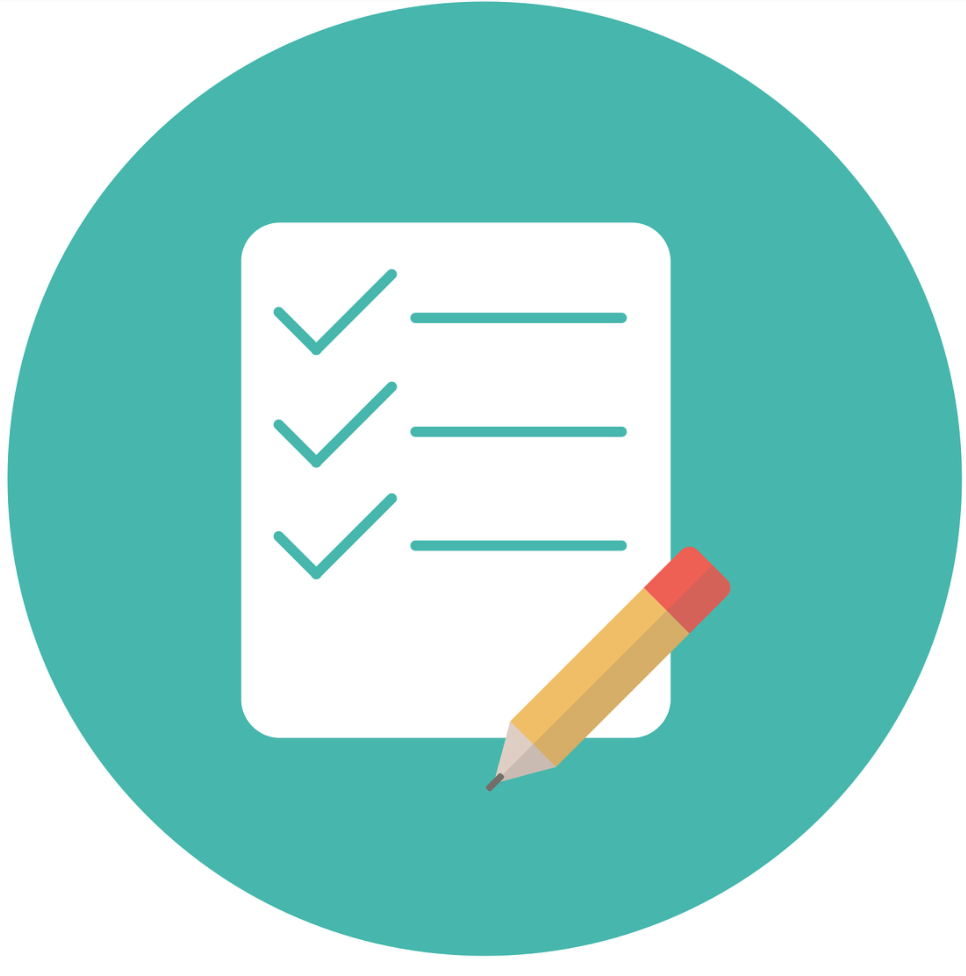
Why is email marketing important?
We’ve already covered how email marketing is a great way to reach your audience, but now let’s dive even deeper into why this form of marketing is so important. Because if you’re going to be spending precious time creating and scheduling an email campaign, it better be worth it, right?
Here are just a few of the reasons why companies use email marketing on the nearly 4 billion active email users around the world.
- Increases customer retention and loyalty
- Builds brand awareness
- Strengthens relationship with current customers
- Nurtures leads
- Allows brand to upsell services or products
- Educates customers on how to best use services/products
- Helps secure company’s spot as a thought leader
- Has a low cost to reach a large audience
- Gives you complete control over the email marketing communication
- Easy to measure results
- Results in higher ROI
People who buy products marketed through email also spend more than those who don’t receive email offers — and that ROI is three times more than what you’ll find on social media. Now that you see it’s more a question of “how” than “if” you should get started with email marketing, we’ll break it all down for you.
How to get started with email marketing
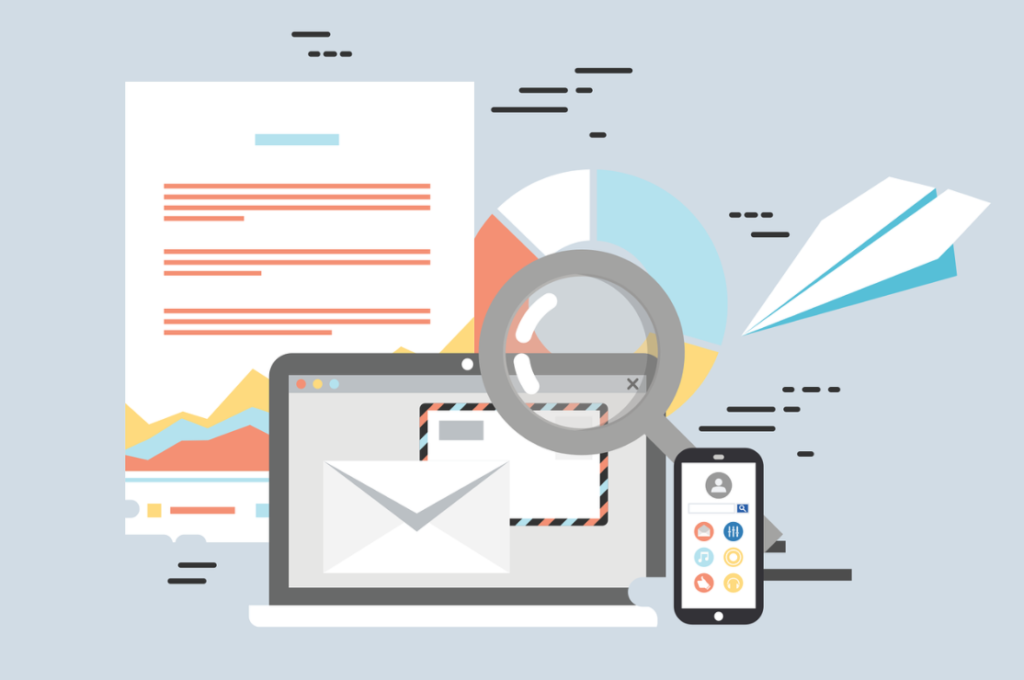
Creating an email marketing strategy doesn’t have to be difficult. Really, if you cover the basics, it shouldn’t be. An email strategy includes several moving pieces, but once you understand how they work together, it’s smooth sailing.
The first thing you should do is create measurable, long-term goals. Those objectives could be things like increasing the number of subscribers by a certain percentage by the end of the year or increasing ROI from promotional campaigns. The important thing is to set goals with real numbers and deadlines that are attainable, yet still push you to be better.

Once you understand what you’re trying to achieve with your campaigns, figure out who you want to target with them. You need to know who your audience is so you can provide campaigns that meet their needs and preferences. While your target audience obviously includes your target customers, it should also include people like influencers and company staff who may influence your target customers’ decisions.
Your brand’s goal and target audience are the foundation for everything else you’ll do with your email marketing efforts. Make sure you have a firm grasp on those two things, and then you can move on to finding the right tools to make them possible.
Top email marketing services
Before you can start sending campaigns and enjoying the benefits of email marketing, you’ll need to pick an email marketing service to use. There are plenty of options available online, and most of them have some sort of free plan you can use to test out the features before you commit to them. Here are five of the best online email marketing services to check out.
Mailchimp
MailChimp is one of the leading email marketing platforms and is known for its easy-to-use interface — perfect for beginners wanting to send newsletters and automated messages with little to no learning curve.
Robly
Robly is known for its OpenGen technology, which resends your email campaign within 10 days after the initial send (with a different subject line) to your subscribers who didn’t open it the first time.
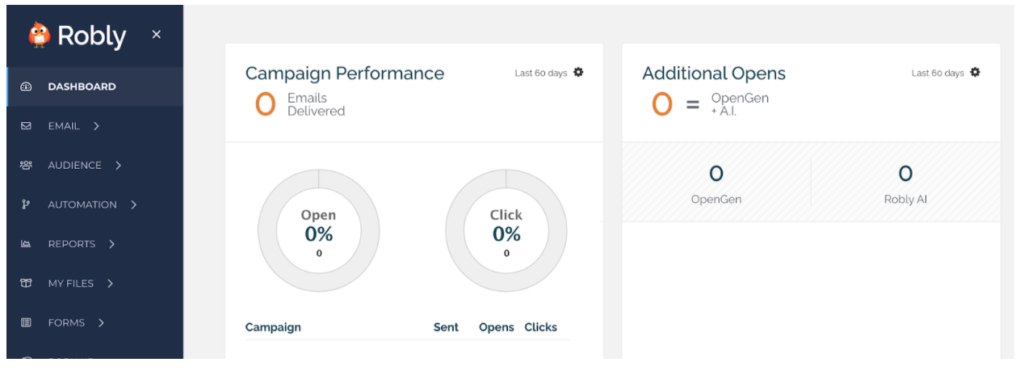
Drip
The purpose of marketing automation is to, well, automate things — and that’s something Drip heavily focuses on. They have 18 triggers and 16 actions in their automation rule builder, which covers things like moving subscribers in and out of campaigns and synching their details to another application, such as your CRM.
Infusionsoft
For small businesses looking to combine a variety of different tools into one solution, Infusionsoft is worth taking a look at. It allows you to capture leads, manage your e-commerce sales, create email newsletters and, oh yeah, handle your marketing automation too.
Autopilot
Using a whiteboard-like layout, you can create multi-channel messaging journeys in Autopilot’s canvas — all before publishing it and watching the live results. Autopilot also allows you to connect apps, forms, and sites to automate your email marketing and communication tasks.
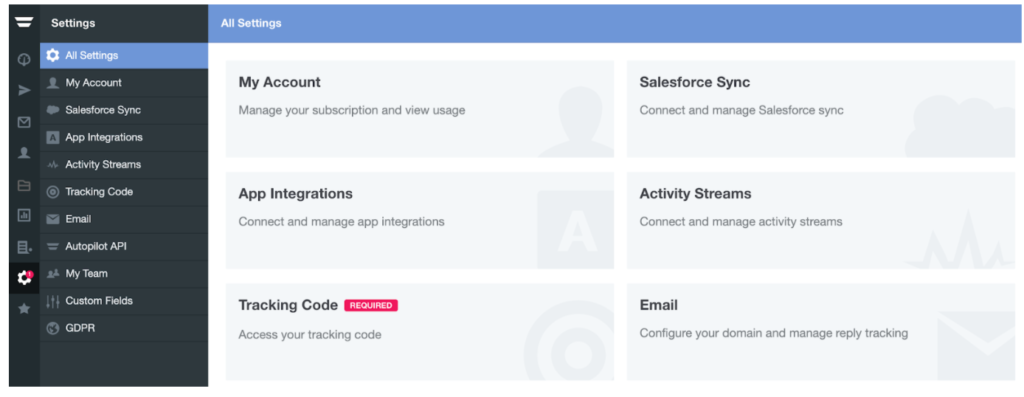
Note: It helps to know your email marketing needs before looking for a service. That way, you can see which one checks off all or most of your list.
Import a list of known contacts
If you have any existing email addresses for customers or leads, you can import those to start building your email list. How you can import those will depend on which email service provider you go with.
Generally, you can either manually upload an existing list from an Excel file, for example. Or, you can connect your email service account to the tool where your customer data lives — like your CRM, accounting, eCommerce tool, or others. Before you import any contacts, ensure you have adequate permission to email these subscribers. These existing contacts are a great starting point for your new email marketing strategy.
How to create an email opt-in form

If you don’t already have email addresses to import — or you’re ready to start growing your list — you can craft an eye-catching opt-in form to start collecting email addresses. An opt-in form is your tool to gather addresses. It’s the “Subscribe Here” box you’ve seen on sites plenty of times.
Email addresses are the lifeline of your email marketing strategy, and the better qualified they are, the better the engagement will be. The purpose of your opt-in form is to make website visitors want to subscribe to your newsletter. To make sure your opt-in form converts, it should include certain components:
- Enticing headline
- Clear description
- Eye-catching visuals
- Simple form
- Subscribe button that pops
After you create the design and text for your opt-in form, it’s time to choose where to put it on your site. Here are a few placement options:
- Floating bar
- Splash page
- Welcome gate
- Header
- Inside your blog post
- Sidebar
- Blog archive page
- Timed lightbox popup
- Scroll box
- Footer
- Resources page
- Exit-intent popup
- Designated sign-up page
Then, you need to choose whether you want it to be a single or double opt-in. That just means whether or not you want your subscriber to confirm they opted in or not.
Opt-in options
With a single opt-in, subscribers only have to fill out your sign up form and click submit. They immediately receive your campaigns and are now a subscriber.
A double opt-in means a subscriber clicks submit and then has to wait for an email confirmation. Once they receive that email, they click on the link to confirm their subscription. Here’s an example of a double opt-in:

So which one is better? It depends on what you’re trying to achieve. A single opt-in will have a higher conversion rate because there are fewer obstacles to join your list. However, a double opt-in list will be more engaged. These contacts typically will have higher open and click-through rates — and have half as many unsubscribes as a single opt-in list. So, sending the confirmation email with the double opt-in helps increase the quality of the contacts, meaning a higher chance of generating sales during time.
One note
If you serve EU-based clients, be sure you understand and comply with the General Data Protection Regulation (GDPR). Do not use pre-ticked boxes, and include unsubscribe options in all of your emails.
It’s up to your company to decide whether or not it will send emails to addresses that haven’t opted in. In the United States, it’s not illegal to send to an address that hasn’t opted in, as long as you include an opt-out link in your email. (However, it is illegal in Europe and Canada.)
Some organizations have decided they’ll only send opt-in emails. Others don’t care if they got an explicit first-party opt-in or not, so long as the engagement is good and it doesn’t adversely impact their deliverability or their brand. Some are specific about the types of emails they will send to people who don’t opt-in explicitly. Others will only send cart abandonment emails to people without an opt-in, but they won’t send an unsolicited newsletter unless the person asked for it.
So, it’s up to your brand to decide what’s best. The most important thing is that your emails earn engagement, whether it’s from an opt-in list or not. If you send emails that have high open rates, high click-throughs, low unsubscribes, and low complaints, you will see your deliverability (meaning your ability to hit the inbox) improve. A highly engaged, non-opt-in list is better for you in the long run than a low-engagement, opt-in list.
Here’s more on if you can send an email without an opt-in:
https://www.youtube.com/watch?v=E6AtUsP8o8M&feature=emb_title
How to grow your customer email list

Simply adding your “Subscribe” button to your website normally isn’t enough of a reason for people to fill in their information. Most people aren’t going to want to give you their email address if they aren’t getting something in return. You need to give them a compelling reason or offer to attract them — like a lead magnet.
A lead magnet, also known as an opt-in bribe, is something valuable you give away for free in exchange for someone's email address. You’ve seen these on various sites. The brand will offer you some sort of premium content if you give them your info.
Lead magnets can come in many different digital forms, such as a PDF, audio file, MP3, video, or other file format. It doesn’t matter what type of file it is as long as it’s free for the visitor. Their only payment, if you’d like to call it that, is providing you with their email address — which, as you know by now, is very valuable.
Here are a few popular types of lead magnets you can use to collect their addresses:
- Whitepaper
- Case study
- eBook
- Cheat sheet of tips
- Free trial
- Webinar
- Free course
- Toolkit of digital tools, plugins, or themes
- Access to a private community
- Quiz or self-assessment
- Coupon
- Free consultation or quote
The possibilities are as endless as your imagination. Just make sure that the lead magnet is something your targeted audience will find valuable. You can place the magnet offer in pop-up windows on blogs or in the sidebar of your site.
Improve your chances of collecting email addresses by pairing the lead magnet with a relevant topic. For example, offer a downloadable tip sheet lead magnet on “How to grow your Instagram followers” on a blog about social media best practices — similar to this example. You know people reading it will find that useful, which makes it more valuable to them.
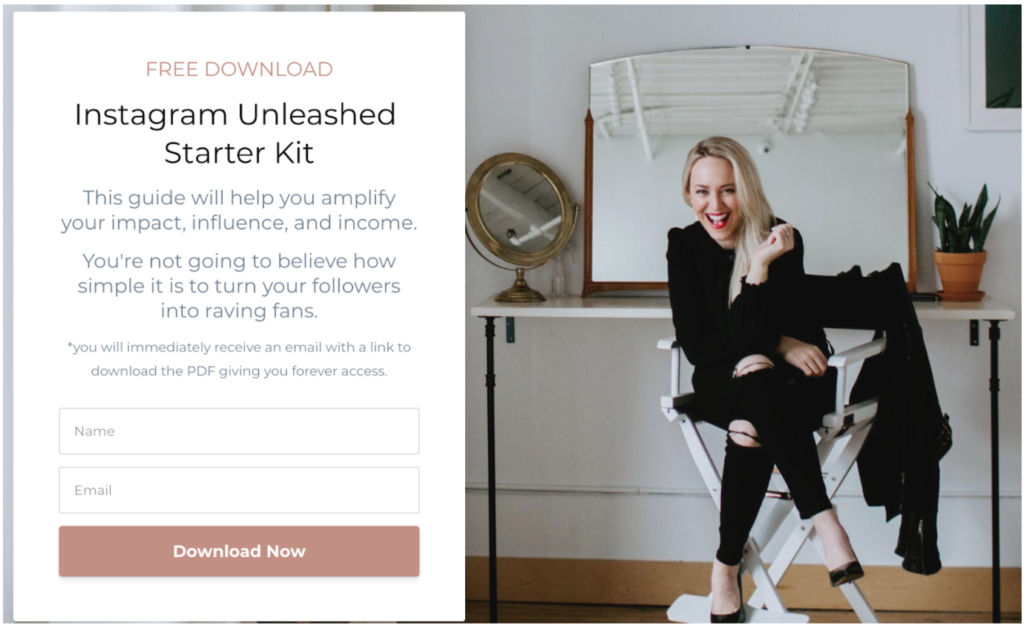
Keep it clean
Congrats! Your list is growing by leaps and bounds at this point if you’ve imported old lists and incorporated lead magnets. Isn’t it an amazing feeling? Now, you need to focus on keeping your list as clean as possible so that you keep your engagement metrics high. What that means is that you don’t want email addresses on your lists that aren’t interacting with you. Obviously, your emails aren’t helping the subscriber if they aren’t opening them, and the inactive addresses are only pulling down your metrics.
To keep your lists fresh, it’s good practice to remove unengaged subscribers every so often. An inactive subscriber could be anyone who has not engaged with any of your emails in the past six months or more, for example.
Before you make any cuts, you can try one more time to reach them by sending a re-engage campaign. We’re sure you’ve seen these before. They have subject lines like:
- “We want you back”
- “Do I bore you?”
This is your last-ditch-effort to see if you can get them to open your email. Sometimes people will, and sometimes they won’t.
Another option is to check in with your inactive subscribers and ask them if they’d like to update their information and preferences. That way, they’re reminded they are on your list, and it gives them control over how they want to engage with your brand.
If none of that works, it’s time to let them go. We know it can be difficult to remove a contact you worked so hard to add to your list, but we promise, it’s for the best.
Email list segmentation
No two people are exactly alike, so why would you group them together in one massive list? The answer is “you wouldn’t.” That’s where segmentation comes in. You can segment your contacts into different lists so that you can send them targeted content based on their customer profiles. And it’s easy to see why so many are using this technique: Marketers who segment their campaigns have seen as much as a 760-percent increase in revenue.
For example, if your customer has purchased children’s clothing from your brand before, they would probably enjoy a blog on “Top summer activities for kids” or “Toddler naptime basics.” An article like that wouldn’t be useful for someone who doesn’t have children, which is why segmenting your lists is so important.
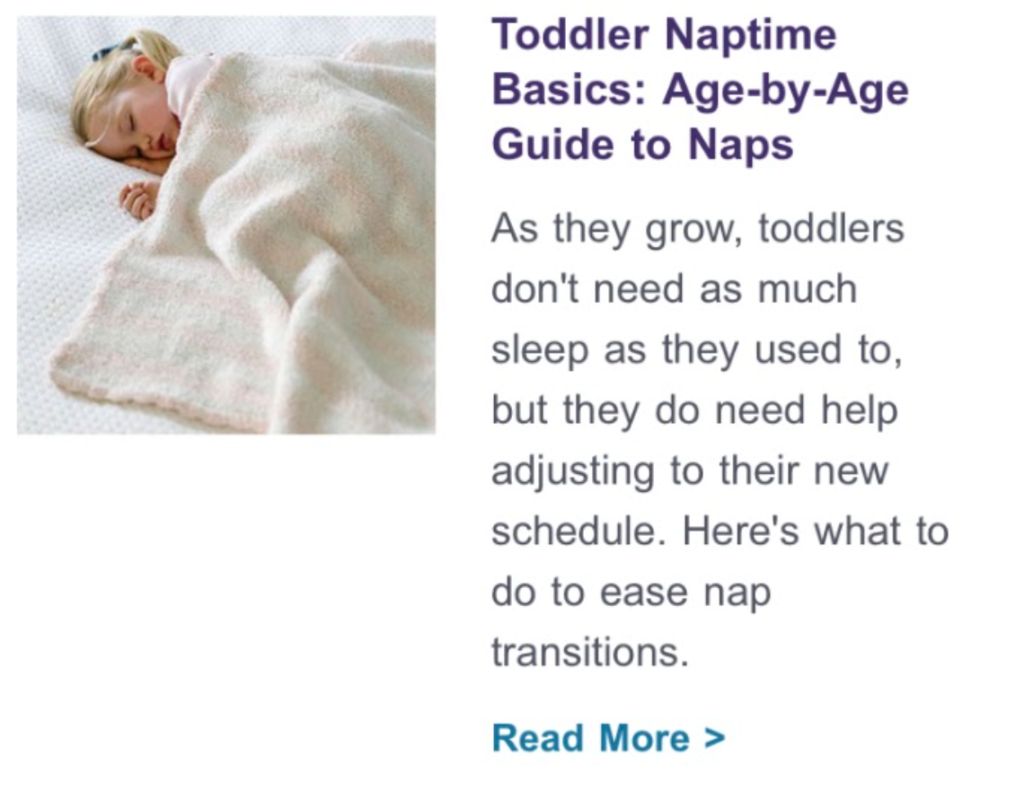
You can gather data about your audience from website analytics, polls, surveys, predictive technology (AI), previous email experiences, social media analytics, or other engagement points. If you really want to know what they’re interested in, give them the power to choose which lists they’re added to as part of your email signup process. They can check the boxes next to all of the lists they want to join (ex. daily newsletter, deals, blog posts, etc.).
Here’s a breakdown of some of the top ways marketers segment their lists:
Demographics: Age, gender, education, location, income, employment, cultural affiliation
Behaviors: Buying history, search history, online engagement, social media preferences, interests, referral method
Segmentation best practices
Your segments can be as simple or in-depth as you want. But when you’re first starting out, it’s best to keep them simple. Start with two or three clear-cut groups and then track the data, test your methods, and consider adding additional groups or layers to your plan.
The whole point of creating segments is to provide your audience with personalized content so they feel like what you’re sending was made just for them. And to help you do that, you’ll need to collect and incorporate what you learn from the data.
Make sure you follow where the data takes you. If your analytics show the highest engagement comes from 30-to 40-year-old women, one of your target segments should be geared toward 30-to 40-year old women. Likewise, if your data is showing more activity in Canada than Mexico, make a specific segment for Canada and target their cultural interests and relevant topics. If you’re not sure who your target audience is, take a step back and start with buyer personas.
The only way to perfect your segments is to put them to the test. Start with simple segments like locations and run some test campaigns. Try two different campaigns both geared specifically toward people in Texas, for example, and see which campaign does better. Then, use those analytics to create sub-segments to better personalize the customer experience.
Create compelling content
Coming up with engaging content on a regular basis can seem overwhelming. One way to get a better grasp of the content is to start by figuring out what kind of message you have to share. (Because, there should always be a reason for sending your subscribers an email — not just because you need to hit your quota for the week.)
There are six basic types of email marketing content you can send to your subscribers:
- Announcements: Does your company have some exciting news or information to share? Send them an announcement, and let them know.
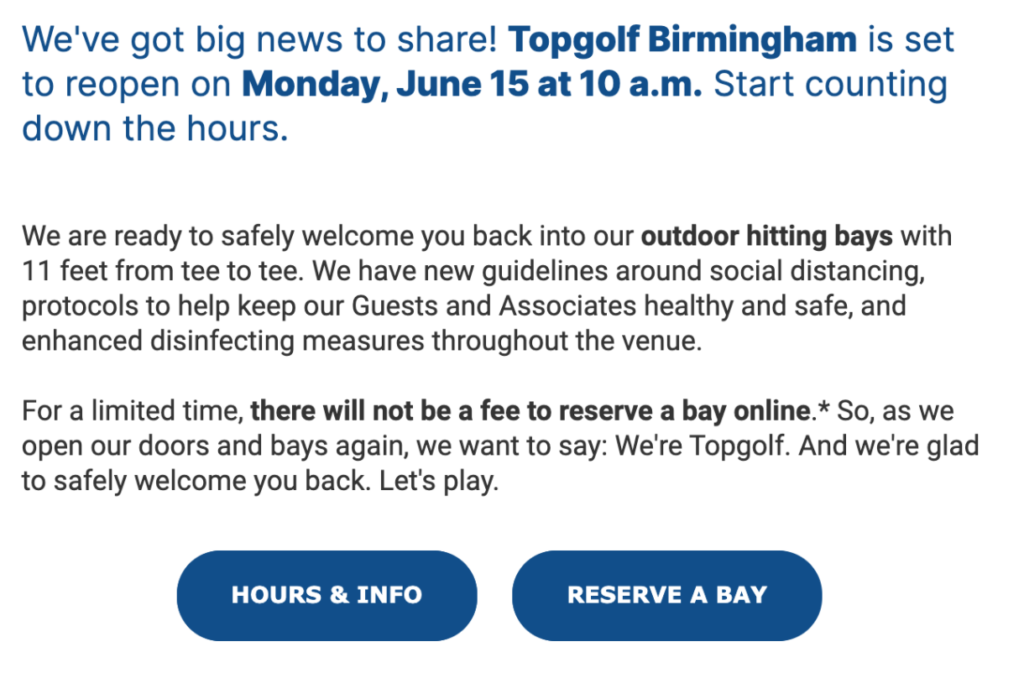
- Marketing offers: Everyone loves a good deal, which is what makes this type so popular.
- Newsletters: These can be sent out daily, weekly, or monthly and feature content like what’s new on your blog.
- Event invitations: Let them know if you have a local or online event coming up.
- Transactional: This can include welcome, confirmation, and follow-up emails.
- Lead-nurturing: There are five stages in the buyer’s journey — awareness, consideration, evaluation, purchase, and post-purchase. You can deliver emails that match where they are in their journey.
Your email marketing strategy should include a mix of these content types over time so that you aren’t sending them the same kind of email each time. Give them a taste of different types of content to keep interested in reading your next message.
Take content to the next level
You should also treat your subscribers like the VIPs they are. Your subscribers are so interested in what you have to say that they’re willing to invite you into their inbox. Don’t take that for granted. Show them you appreciate them by letting them be the first to know about new products and sales.
Your content should also be useful and provide value to your customers. If you’re not sure if the email will be of use to them, think about the types of messages you get in your inbox. Which ones do you delete, and which ones do you read and enjoy? Then, think about the email you’re sending to your subscribers and if it fits in the group with the ones you’d actually want in your inbox. Emails with how-to articles, videos, and other informational pieces are good options, as long as the topic relates to the subscriber.
Tease them
While useful content has a way of being longer, you don’t have to cram it all into your email message. Actually, it’s best that you don’t. Provide your reader with enough information in the email to hook them, and then include a “Read More” link to your website with the complete text. You only have a few seconds to catch their attention, and you don’t want a long, text-filled email to scare them away. Plus, that gives them a reason to click-through.
Even if your company covers the most boring topic known to mankind, your email content better not sound like it. So, make sure your content doesn’t sound like a textbook. Add in your brand’s voice, personality, and sense of humor (if that’s in line with your branding) so they know exactly whose email they are reading. That will remind them why they signed up for your emails in the first place. Your email should sound like you’re talking to someone, so when in doubt, try reading it out loud and see how it sounds.
Here are some content examples that do and don’t work to help you figure out what type of content to send:
https://www.youtube.com/watch?v=KKZKqOAzsJE
Add a personal touch
No one wants to feel like just another name on your email list. That’s why it’s so important to personalize your email campaigns. From the content topics to adding their name, there are several ways you can make them feel like you wrote the email just for them.
Most email marketing service providers will have some sort of format they use for adding in a contact’s name. For example, if you put “Hi [FNAME]!” it will pull in their name, showing up for them as “Hi John!” That beats a “To whom it may concern” any day.
You can also remind them why you’re sending them a certain piece of content. Tell them you chose this content because they liked another similar article. Or, they viewed a product on your site, and this one is similar. The goal is to tailor your message as much as humanly possible (without sounding creepy) to each subscriber.
Here are some more ideas for what you can send:
https://www.youtube.com/watch?v=W_tPhVVRNkU
How to create an effective email marketing design
Whether you’re an HTML master or you don’t even know what those letters stand for, there are ways you can create a stunning campaign design. Most email marketing services will give you a few options when it comes to building your design, including Text, HTML, and some sort of Drag-and-Drop designer tool with pre-designed templates. Your level of experience and preferences will help you choose the type of designer you’re most comfortable with using.
But no matter what type of design tool you decide to use for your campaign, there are a few components you’ll want to include in your design to get the most engagement.
Easy to read
For starters, the design should make your content easy to read and be appealing to the eyes. That means breaking up the text so that it isn’t one long chunk of black that makes their eyes glaze over. Keep the paragraphs to one or two sentences top, which also makes it easier for them to scan and figure out if it applies to them (which it should).
Speaking of the text, you should use a legible font that’s within the 14- to 16-pixel range that will be rendered across email clients. Your headline can be a larger font size and then move to a smaller size for the main meat of your message.
Add visuals
Break up your text with some interesting images. You can use original photos (highly recommended), stock images, or other graphics. Just remember to use the web-res version of the images so that your email size isn’t too large to load. Sites like Pixabay, Pexels, and Unsplash have plenty of free images you can download and use if you don’t have many in-house options. Don’t be afraid to have fun with the images — and make the text part of the visual component — like in this example from InchBug:
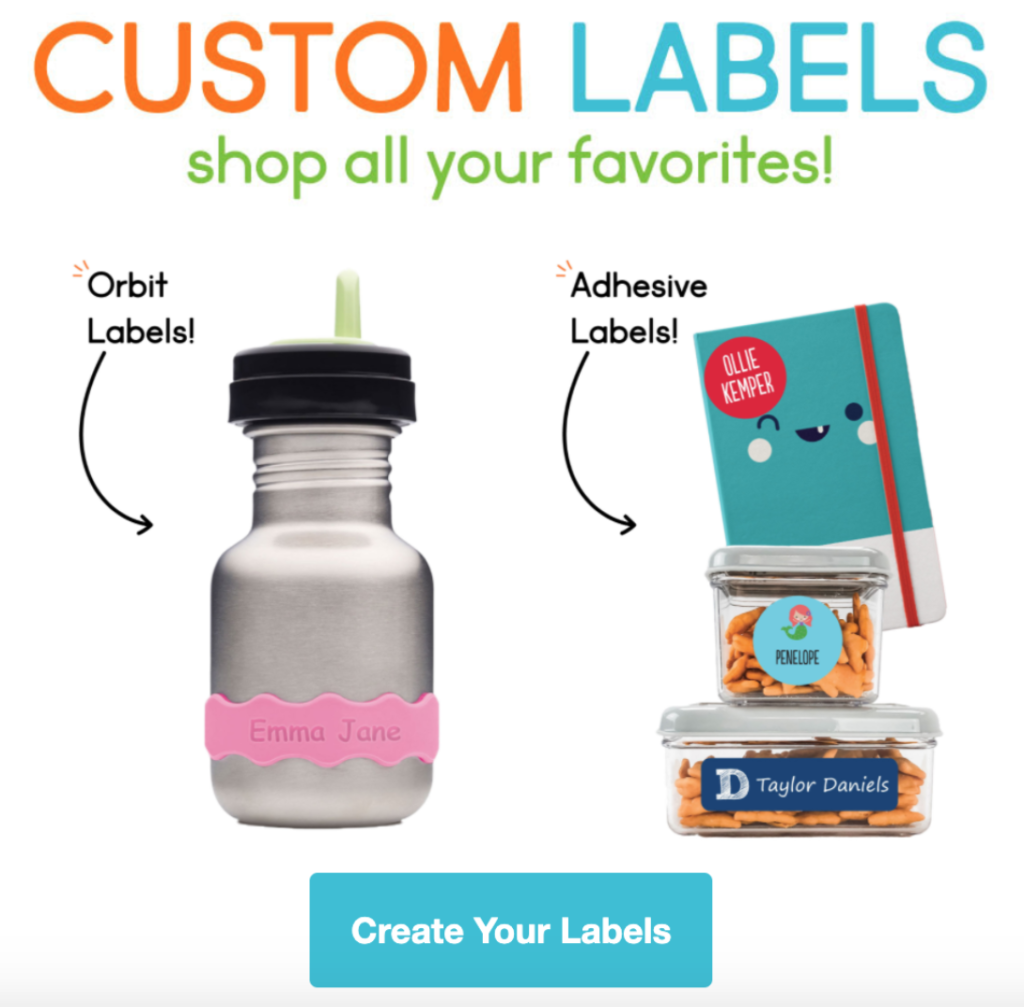
Button stands out
Make sure your call to action (CTA) stands out in the design by creating a colorful button for it. Your CTA is the next step you want readers to take — such as reading your blog, viewing a product, creating your label (like in the example above), or signing up for a consultation. So, it needs to be easy to spot.
Optimize for mobile
With more than half of users accessing their email from a mobile device, you can’t afford to miss out on that big chunk because your email isn’t responsive and optimized for mobile. Everything in your message should be easily loadable on a phone or tablet. Also, remember that most mobile devices are smaller, so take that into consideration when laying out your design.
Some other general pointers are to keep the formatting under 600 pixels wide, use a larger font, ensure images display correctly, keep CTA buttons on the larger side so they are easier to tap with a finger, and don’t place two links right next to each other.
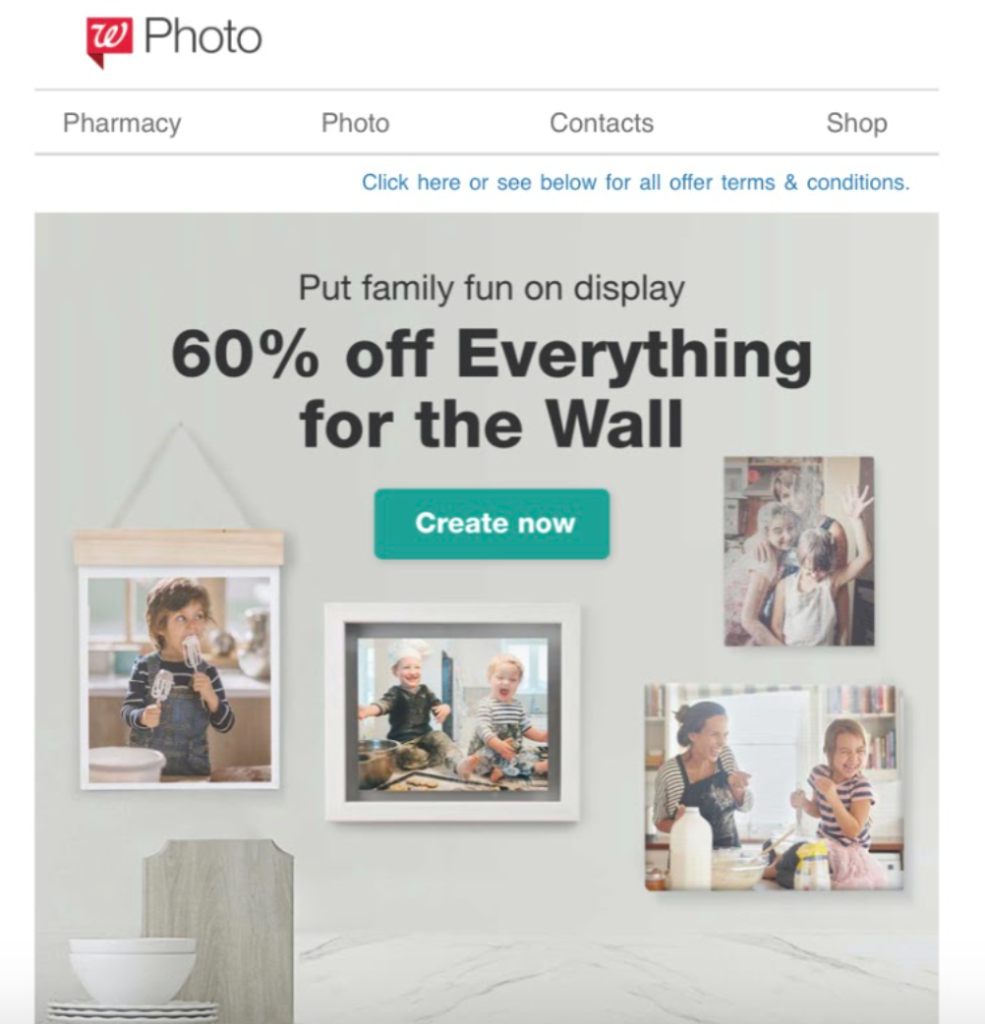
Set a send schedule
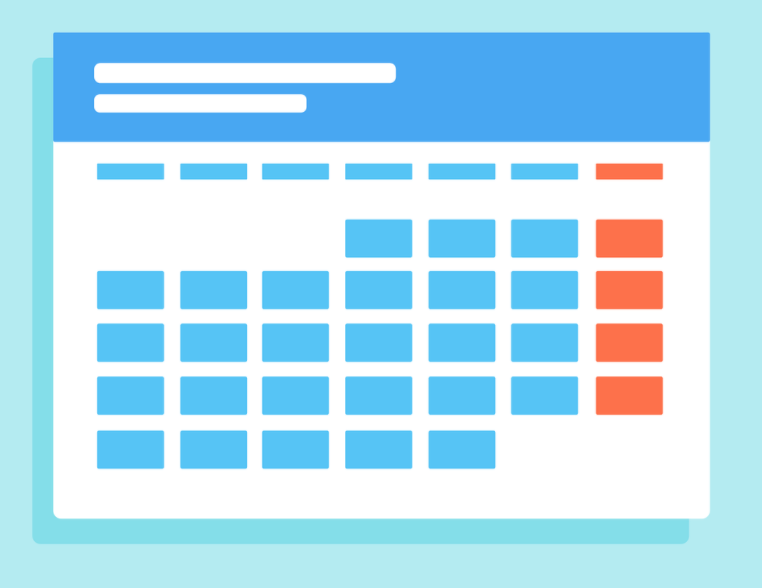
Decide how often you plan to send your email campaigns, and share that information with your audience. That will help your subscribers know what to expect — and keep them on the lookout for your next message — and also help you stay on track. Make sure your schedule is something you can consistently stick to so you can build trust with your readers.
You will be able to schedule your campaigns ahead of time using your email marketing service provider. Keeping an updated content calendar can ensure you’re staying on schedule and also providing a variety of content types. On your calendar, you could include the email topic, images/art needed, CTA, and type of content.
As for when to send your email, that depends on your industry. But to help you have a solid starting point, here are a few send trends from across different industries:
- Tuesday is the best day to send emails by far.
- If you send two emails a week, send your second one on Thursday.
- The best time of day to send emails is (starting with the best time) 10 a.m., 8 p.m., 2 p.m., and 6 a.m.
Pick one of those options, like Tuesday at 10 a.m., and see how your campaign performs. Then, hone in on the best time/day for your brand. You can use services like Google Analytics to get a better idea of when your subscribers are interacting with your brand.
How to stay out of the spam folder
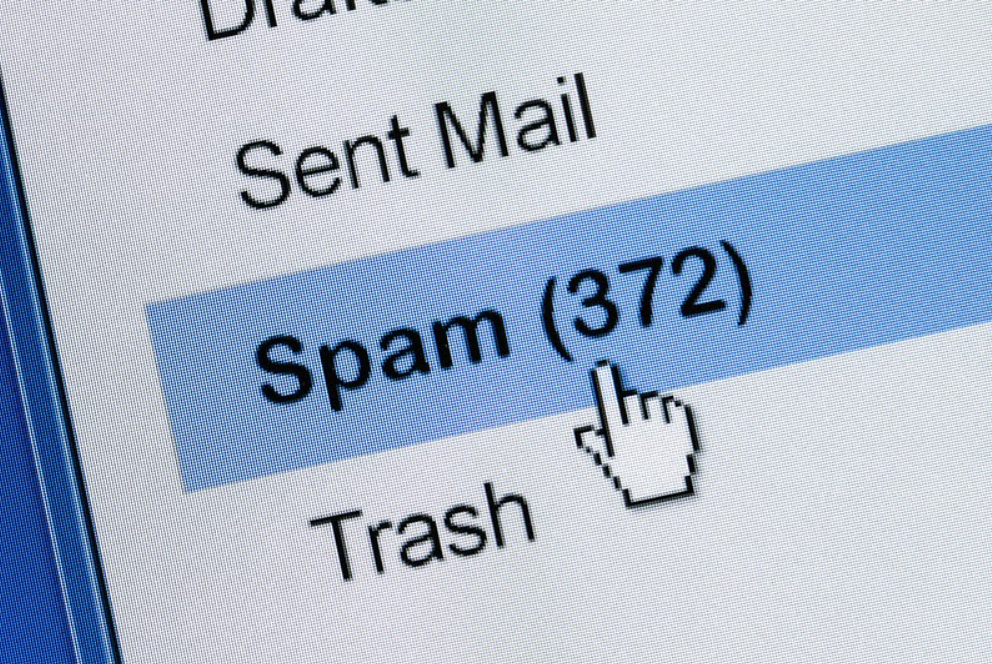
No one wants their email campaign to end up in someone’s spam folder, especially after they put all of that work into creating it. Luckily, there are some simple ways you can avoid the dreaded “spam” word.
Don’t buy addresses
It might be tempting to purchase email addresses, but nine times out of 10, they aren’t worth anything. You’d rather have 100 subscribers who engage with your emails than 1,000 who don’t. And with Google, inorganic, deceptive methods of building engagement are punished.
Use opted-in subscribers
The best way to ensure your contacts actually want to receive your emails is by having them opt-in. A double opt-in is even better. Remember, it’s all about quality over quantity. Always gain permission from subscribers before sending emails for each new email campaign, even if they’re returning customers.
Let them unsubscribe
This is a requirement for email marketing services, so make sure you have an Unsubscribe button or link somewhere in your email. Most of the time, you’ll find this at the body of an email.

Welcome subscribers
By sending new subscribers a Welcome email, you’re reminding them that they signed up to be on your list. Be sure to send this email within 24 hours of them signing up — and the sooner you send it, the better.
Mind your metadata
Spam filters are always on the lookout for unsolicited emails and scams. Use the merge function to personalize your recipient list, and request that subscribers add you to their address book.
Send from a good IP address
A good IP address is one that hasn’t been used by someone else who has sent spam in the past.
Avoid spam words
Using too many sales-like or trigger words like “cash,” “clearance,” “buy,” “needy,” “sleazy,” and “cheap,” could land you in spam. Your email marketing platform should flag any words that are known to cause spam issues.
Follow-through
Don’t use deceptive subject lines. Provide whatever the subject line promises in the email body.
Share location
Put your company’s address in the bottom or the email. It shows your company doesn’t just live online.
Remember: Your email campaigns are an extension of your brand, so act with the same integrity you would with all customer interactions. You can increase the odds of your emails making it to the desired recipients by taking the above precautions.
Improve open rates
Staying out of their spam folders is great, but we know what you’re really after: open rates. You want to know that your subscribers have opened the message you crafted just for them.
A low open rate could mean a few things, but a good place to start is with your subject line. If your subject line isn’t compelling, subscribers will never click to open your email.
You can test different subject lines by using A/B testing with your campaigns — which simply means you send out different versions of the email to your list to see which one performs the best. That will show you which one performs the best so you can recreate that for future campaigns. Only test one component at a time (so the subject line in this case) so that you know which variable it was that had an effect on the open rate.
Here are some tips for improving your subject lines, which in return will boost your open rates.
Must-read subject lines
You can have the most amazing content on the planet. But, if your subject line stinks, no one will ever know. Your subject line should make subscribers want to read more. That can seem like a daunting task, which is why we put together some tips that will help you craft the next must-read subject line.
- Ask a question.
No matter your business, your ultimate goal is to solve your customers’ problems. Consider how you can address a specific issue and pose questions that you would want to be answered if you were receiving that message. Take this, for example:
Do you always wake up tired?
This simple question can pique a reader’s interest enough that they can’t help reading on to find out how the query fits into their own life. Just make sure that the body of your email provides the answer, or they’ll feel cheated.
- Be different.
That may seem difficult considering about 270 billion emails go out a day. But, you can still make sure your subject lines stand out from the crowd by giving it some personality. Maybe you add in some emojis, current lingo, a conversational tone, or use a fun play on words that doesn’t come across as cheesy.
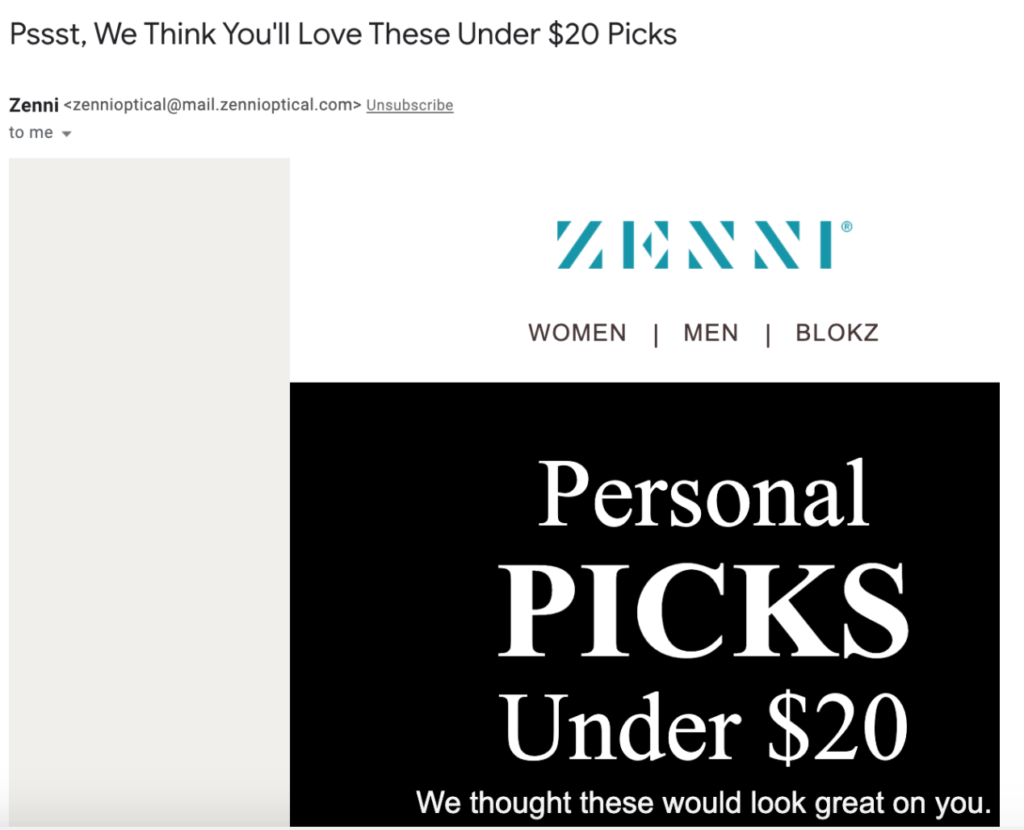
- Stay fresh.
You aren’t only competing with other brands for the best subject lines, but you’re also up against your own after a while. Make sure you don’t use the same format or style with every single one. That will keep readers from getting bored with your messages.
- Keep it short and sweet.
The email body is where the majority of your text should be found, so don’t feel like you have to explain everything in your subject line. Actually, the longer the subject line, the lower your open rate is going to be. Here’s a good and bad example of subject line lengths:
Good: Don’t forget your free download!
Bad: Your free download is still available, so don’t forget about it!
- Get personal
Your email isn’t the only aspect of your marketing campaign that you can personalize. You can also add their name into the subject line to catch their attention. Many automated mailing systems even offer built-in personalization capabilities that add a more intimate touch no matter how big your subscriber list. Also, avoid using terms like “subscribers” or “lists” when interacting with customers.
- Create curiosity.
Make them curious enough that they want to open the email, but don’t be so cryptic that they aren’t sure what you’re talking about.
- Add numbers.
Just like with blogs and other articles, there’s just something about numbers that draw us in.
5 must-read summer books
10 things parents say every day
Here are other tips on writing great subject lines that are sure to earn you an open:
https://www.youtube.com/watch?v=5py5PLLB-3o
How do you stack up?
It’s hard to know if your campaigns are performing well, especially in the beginning, if you don’t have anything to go off of. While metrics vary from industry to industry and business and business, here are the average rates for all industries (rounded up to the nearest decimal):
- Open rate: 14 percent
- Click-through rate: 7 percent
- Bounce rate: 9 percent
- Unsubscribe rate: 0.01 percent
Not sure which email metrics you should be looking at? Check out this video:
https://www.youtube.com/watch?v=q5Q5HM87-_s
Autoresponders
Now that you’ve learned how to grow, segment, and effectively reach your email list, it’s time to talk about how you can automate the process. That’s right: You can turn on your little money-making machine and let it do its thing with automated emails.
Autoresponders are a sequence of emails that are automatically sent to your subscribers. They are sent to people on your email list after that person does something to trigger the send. For example, an autoresponder can be triggered by events like joining a list, abandoning their cart, downloading an ebook, making a purchase, or specific browsing behavior.
Type of content
The autoresponder’s content is something you create in advance and set up to go out after they make the set action, with help from your email marketing software. For example, you would create an email that would go out to anyone who purchases your dog food to let them know you also have dog treats.
Not only do autoresponders take some of the work off of you, but they are also a great tool for nurturing leads and turning prospective leads into customers. This type of email provides the reader with valuable information because it’s based on one (or more) of their actions.
You can make your autoresponder sequence — which is basically a series of causes and effects — as simple or complex as you want. These series, often referred to as journeys, let you set what happens when a person makes a certain action. You can also set conditions based around these actions, like if they are/aren’t on a list or have/don’t have a tag. Here’s an example of what an autoresponder journey looks like.
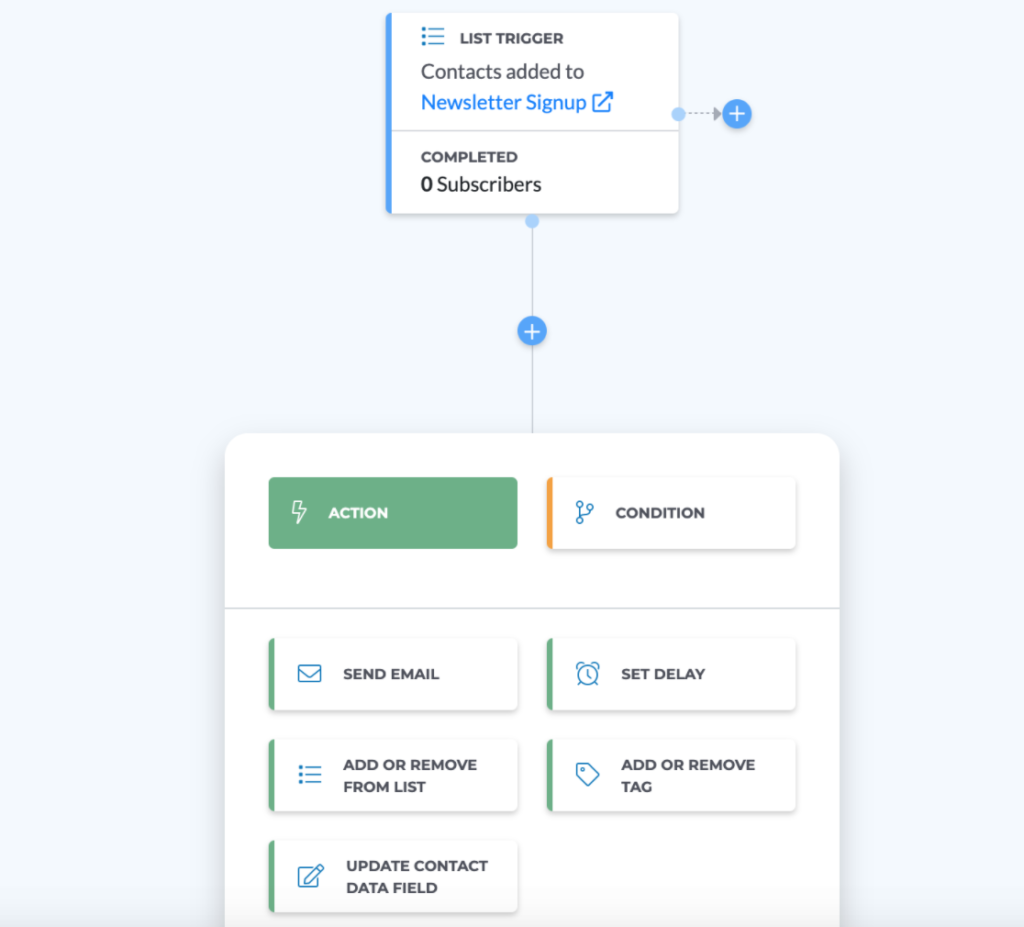
How to use them
You can set whatever type of goal you want with an autoresponder, but here are some of the most popular options. You can choose one (or a combination) of these goals for your series:
- Welcome sequence. After someone signs up for your email list, it only makes sense to send them a “Welcome” email, which is something you can set as an autoresponder. This email could include links to your lead magnet(s), a “thank you” for subscribing, or a CTA for your most popular blogs that would apply to someone just joining your list.
- Lead magnet. Who says different components of email marketing can’t work together perfectly? If you have a lead magnet for a free course, for example, you could set up an autoresponder that delivers a series of emails containing the course lessons during a specific time frame (every few days or weeks). A course like this has a high level of perceived value, so make it work for you.
- Upsell products. Promoting similar products to the ones they’ve already purchased is a great use of an autoresponder. Depending on your products or services, you could offer them an upsell or cross-sell to a related product or service. So, if they purchased a computer from you, you could then offer them a computer bag, software, or protection plan they could add to their order before it ships. If you sell products that people buy frequently (like food or disposable items), you can automatically send them offers for new items when you know they’re about to be ready for another order.
- Sales funnel. Using autoresponders as a way to push leads through the buyer’s journey (or sales funnel) is nothing new. If your journey includes the awareness, consideration, and decision stages, you’ll want content that fits into each. Once they engage with content at one stage, they can move on through the rest of the stages via autoresponders. For example, you could start by sending them educational articles, videos, and how-to pieces. Once they’ve read those, invite them to a webinar where you describe different purchasing options and which might be right for them. And if they’re still moving forward, send them content where you include an offer to your service or product.
Map out your email sequence
Once you’ve figured out what you want to use your email autoresponder for, you can start to draft out the specific sequence and how long you want it to be (ex. how many days and how many emails).
There’s no set rule for how many emails you need to include in your email sequence. It just needs to be long enough so that you can reach your goal. So, the length for your autoresponder will be based on its purpose, your segments, subscribers’ preferences, and other specific factors.
After you know how many emails you want to use, you can start figuring out how you want to space them out. It’s OK to send an email once every two days for educational emails — and several in a single day when you’re running a huge sale that’s about to end.
It’s all about finding a healthy balance between your sales and “value” emails. A good way to go about it is to follow the 80/20 rule. That means 80 percent of your emails should provide value, while 20 percent are about making a sale.
Next, create an outline for your email sequence, either by typing it out or putting it directly in your email marketing platform. You’ll want to include what topics each email will cover and what CTA will be included. With an outline in place, you can begin to create the campaigns that will be a part of the autoresponder series.
Review, test, and send campaign
There’s nothing worse than hitting “Send” on your email campaign, only for it to go out with a mistake to hundreds or thousands of subscribers. Typos, broken links, and distorted images are a good way for your email to end up in the Trash folder. Or worse, they could unsubscribe from your list because it makes your brand seem unprofessional.
The best way to avoid all of that is to edit and review your email marketing campaign before it goes out to the masses. So whether it’s a single email campaign or an autoresponder series, you need to make sure everything looks good and works before you schedule or send it out.
Read (and then reread) the subject line, from name, preview text, headline, body text, footer, CTA, and any other text that’s in the email. If that all checks out, look over the design to make sure it’s clean and gets your message across (without taking away from it).
When everything looks good from within your email marketing platform, send a test email to yourself and a friend or coworker. Make sure you view the test email on your desktop and mobile device to ensure it works on them both. If everything still looks great, check to see if your email service has flagged anything that might land your message in spam. And when it gives you the go-ahead, you’re good to go.
Now it’s time to hit Send and start tracking your email campaign!
Frequently asked questions
We’ve covered some of this information already, but here’s a quick list of some of the top questions we hear from people.
Are there free email marketing templates available?
Yep. Most email marketing services will provide you with free design templates — anywhere from a handful of templates to dozens. So, all you’ll have to do is plug in your information, and you’re good to go.
How do you create a successful email marketing campaign?
Here’s a rundown of what you can do to make your campaign more successful:
- Set email marketing goals
- Create a targeted email list
- Know email types (ex. newsletters, promotional, etc.)
- Understand your audience
- Choose an email marketing service that meets your needs
- Build eye-catching opt-ins
- Craft engaging content
- Make sure your subject line wins them over
- Send follow-up emails based on their initial interaction (or lack thereof)
- Create a design that shows off your brand and message
- Edit your email, and send yourself (and someone else) a test email
- Track your email metrics
- Figure out what worked so you can recreate that for your next campaign
What email marketing metrics should I track?
Start by setting a goal for your email marketing campaigns to decide which metrics are the most important for your brand. Probably the easiest one to track is the open rate, which will give you a better understanding of how well your subscribers are receiving your messages. As the name suggests, the open rate measures how many subscribers opened the email you sent.
Another good one is the click-through rate, which shows how many people clicked the links in your email. These can be links for them to “Read More,” or you can include CTA buttons. Typically, your click-through rate will be much lower than your open rate.
Take your click-through rate a step further with the conversion rate. That will show you how many people clicked on the link and then completed a specific action, like making a purchase. The bounce rate is another good one to look at since you want to minimize this number. Your email marketing service should remove hard bounces from your lists, and some will also flag or remove soft bounces after a certain number of attempts.
A few others you can look at include unsubscribes, list growth rate, spam complaints, forwarding rate/email sharing, engagement over time, and overall ROI.
When’s the best time to send my campaign?
It depends. We know that’s not a great answer, but the best day and time to send will depend on your industry and specific company. You can try sending them at different times to see which ones get the best results. While the specific moment that’s best to send emails varies, here are a few trends across the board that can help you narrow it down:
- Tuesday is the best day to send emails by far.
- If you send two emails a week, send your second one on Thursday.
- The best time of day to send emails is (starting with the best time) 10 a.m., 8 p.m., 2 p.m., and 6 a.m.
Pick one of those options, like Tuesday at 10 a.m., and see how your campaign performs. Then, hone in on the best time/day for your brand. You can use services like Google Analytics to get a better idea of when your subscribers are interacting with your brand.
What are the types of email marketing campaigns?
There are six main categories of email marketing campaigns:
- Newsletters
- Announcements
- Marketing offers
- Event invitations
- Lead-nurturing emails
- Transactional (ex. welcome, confirmation, and follow-up emails)
Each campaign you create and send should serve a purpose. It needs to provide some sort of value to the reader, whether that’s an important piece of information, coupon, or helpful article. Don’t send campaigns just for the sake of it.
How do I create an effective email marketing strategy?
Start by creating a goal for your email campaign, whether that’s achieving a certain open or click-through rate or reaching a certain number of engaged subscribers. Once you have your goal set, you can then put things in place to help you reach it. Then, go down this checklist:
- Figure out what types of emails you’ll send
- Choose your audience segments
- Use the right email marketing services/technology
- Build engaging opt-ins
- Plan out your emails and autoresponders (take them through the sales funnel)
- Write an eye-catching subject line
- Craft your email marketing copy
- Edit your copy, and let a coworker or friend read it
- Design your email (either using a template or code)
- Send it
- Track your campaign and its metrics
- See what did/didn’t work, and use that information for your next one
Should I buy an email list?
No. For starters, if you buy an email list, you could be violating the rules of consent under the GDPR. Another reason to steer clear of this practice is that reputable email services won’t allow you to send emails to lists you’ve purchased. If you attempt to email these lists (which will be low-quality anyway), you’ll harm your email deliverability and IP reputation.
Should I be sending email newsletters?
Yes! Email marketing is a cost-effective way for your brand to reach customers and leads. More than 80 percent of B2B marketers send email newsletters as part of their content marketing strategy, and newsletters are an important part of any marketing strategy. Oh, and did we mention for every dollar you spend on email marketing, you can expect an average ROI of $42.
